- Account Settings
- Bird Breeds
- Fish Breeds
- Horse Breeds
- Rabbit Breeds
- Turtle Breeds
- Dog Insurance
- Tips and Advice
- Dog Products
- Cat Products
- Fish Products

Top stories

- Dog Care & Services
The Home Visit: An Essential Part Of Adopting A Dog

“Hello! I am here for your home visit!” If you’re adopting a dog, you might be greeted by these words from a stranger at your door. Not to worry, he’s not here to sell you anything – this is a home visit and it’s an increasingly common part of pet rescues adoption procedure.
In fact, I may end up on your door step because I do home visits for a local dog rescue. This is my favorite part of volunteering. I love to meet people and feel so special to be part of the final step in a dog’s journey to finding a new home.
Related: Adventures In Fostering: Meet Francis
I understand that people may be nervous about a home visit. Relax – I’m not there to judge your home décor color scheme (but since we’re on the subject… do you think that flashing beer sign goes with the couch?) or make sure you’ve dusted everything with a flat surface. This home visit is to ensure that this adoption is going to be successful. The best way to do this is by having an in-house conversation, as well as a pair of trained eyes that will help you eliminate any potential problems around your house and yard.
Related: A Day In The Life Of Dog Foster Dad
I’ll want to know if you have a vet you’re using. It’s best to have a vet set up before you bring your dog home, rather than rushing to find one in case of an emergency.
Have you ever taken an obedience classes before, and what activities you are looking to do with your dog? What’s your daily routine and how you will include the dog in this? This includes where the dog will eat, sleep, be trained and exercised.
I’m not here to tell you how to do it; I am here to get you to think about it. Some families have a bed already in place and bowls out for meal time. Others are looking for guidance, and we will discuss options and possibilities that will work for you.
What am I looking for?
In general, I am looking to see that the home is safe for the dog. If you have a fenced yard, I will inspect it with fresh eyes for any possible escape routes. Maybe your gate is sagging, or you have a stack of firewood piled against the back corner, which a dog might use as a ladder and escape the yard. These are easy fixes, and it’s my job to point them out to you.
I also look for potential hazards to your new dog. Many dogs just love to eat from the cat litter box, or get confused by kid’s toys vs. dog’s toys. I check to see that household cleaning supplies are stored away safety – products such as laundry soap can be harmful to dogs if ingested.
Most of the homes I visit, the humans have to work outside of the home. Hey, someone has to bring home the bacon for chew toys and food. I understand! I am also looking to see where the dog will be spending time when his owners are out of the house.
When a shelter takes on the commitment of a dog, it’s a huge responsibility. Finding it the right fit for a forever home is part of that responsibility. The home visit is intended to support the adoptive family and to ensure that this will be the right match. Be open with me; ask me whatever questions you want. I’m here to make sure that everyone is happy, and that you and your new dog live happily ever after!

Kevin Roberts lives for adventure. Together with his pack of rescue dogs and his husband, he spends as much time outdoors as possible. Kevin lives by the motto: "Get outside and play with your dogs!
More by Kevin Roberts

Dog Gets Bitten in the Face to Save His Owner From a Venomous Snake

Cat Learns to Turn on the Sink Faucet, Causing Cat-astrophic Flood
Related articles.

6 Mistakes to Avoid When Adopting a Dog
You’ve decided to adopt a dog – that’s awesome! Before you rescue a pooch, watch out of these common adoption mistakes. When you adopt a new dog, you could very well be saving a life – literally. No matter where he comes from, bringing home a new dog can be incredibly exciting but there are also some challenges you are likely to encounter. To make sure that you and your adopted friend adjust to your new lives together, avoid these top six mistakes. Rushing into it. When you visit a dog shelter it is easy to be overwhelmed by all of those sad, puppy dog eyes staring at you through the bars. At that moment, it is hard to believe that bringing home one of those needy dogs could be anything less than amazing, but it is a big decision that you should consider carefully before making. Think about whether you are really ready to get a dog and if you have the space, the time, and the money to devote to caring for him for the rest of his life. Related: The Home Visit: An Essential Part Of Adopting A Dog Going only for puppies. There is nothing more adorable than a puppy, that is for sure. But bringing home a new puppy is a major commitment of time and effort – you’ll need to housebreak him, socialize him, and train him, plus you’ll have to deal with puppy problems like chewing and having accidents in the house. Think about bringing home an adult or senior dog who may already be housebroken and trained and who is just as deserving of a home.Not getting to know the dog. The shelter environment can be very scary and stressful for dogs, so the way a dog acts at the shelter may not be the way he acts at home. Do not assume that just because a dog is calm and quiet at the shelter that he will stay that way once he settles in at home. Considering fostering the dog for a week to get to know his personality before you commit, just to make sure that it is the right situation for all involved. Related: Shelter Dogs Strike a Vogue Pose For Their Adoption Profiles Assuming mixed breeds are the only option. Animal shelters around the country are overrun with mixed breed dogs, especially of the Pitbull type. But that doesn’t mean that you can’t find a purebred at a shelter. Dogs are abandoned for all kinds of reasons and if you have a particular breed in mind, give the shelter your name and contact information so they can get ahold of you if one comes in.Thinking it’s going to be easy. Bringing home a new dog is always going to be a challenge. Whether you are adopting a puppy or an older dog, it will take time for your new friend to adjust to his new home life and the two of you may go through some growing pains when it comes to your relationship. Be sure to give your new friend plenty of love but respect his need for space and quiet time if he is having a hard time making the adjustment.Not going to the vet. In many cases, dogs are turned over to the shelter with minimal background information – when you adopt a dog you won’t always know his history. Even though the shelter will give the dog an exam before adopting him out, you should still have him seen by your own veterinarian shortly after bringing him home and then you need to keep up with regular vet visits. There is nothing more noble than giving an abandoned dog a new home, but adopting a dog is not always easy. There are certain challenges involved and you are going to make mistakes. But learning about the most common mistakes adopters make can help you to avoid them.

What is the Best Dog Harness for Senior Dogs?
Final Thoughts – The Best Harness for Senior Dogs Many veterinarians and experts on the health and care of senior dogs will recommend using a harness. However, not all harnesses are created to meet the needs of every life stage. When selecting a harness for an older dog, there are unique factors to consider. This includes the weight and bulkiness of the harness, how easy it is to put it on/take it off, and the padding inside the harness for their comfort. Pay careful attention to ensure the design or fit doesn’t limit or impact movement. There are many great harness options on the market, including those made for regular wear and specialized lift support harnesses with convenient shoulder straps. If possible, visit your local pet store with your senior dog to check out your options firsthand. This will help you better assess the size needed and whether the design suits your dog’s unique needs. Most importantly, remember that there is no “one-size-fits-all” solution. You may find that you are using two different harnesses with two senior dogs in your home. That’s okay! The goal is to find the option that supports all your dog’s needs and helps you give them the best possible quality of life. Join the PetGuide community. Get the latest pet news and product recommendations by subscribing to our newsletter here.

Does My Dog Need Winter Boots?
The days are growing colder and colder, and your pet is more and more hesitant when it’s time to go out for a potty break – who could blame them? It’s not like we owners don’t need to give ourselves a pep talk when it’s time to take our dogs out for a walk when it’s snowing outside or the icy wind is whipping everything in sight.While winter can be very unpleasant for your dog, there are ways to keep your pooch toasty and more comfortable when the temperatures drop, ranging from cozy winter coats, warm blankets, and protective winter boots. Yes, those cute little booties are more than a fashion statement – if you’ve been questioning their efficacy, read on to find out if your pet could use a pair of nice winter boots to keep their paws snug and warm.Does My Dog Need Winter Boots?You might think that paws are naturally protected from the cold ground and rough terrain thanks to their unique properties, but that’s only partially true. Not all doggos are built the same. As they come in different shapes and sizes, and with different coat lengths, it means that they will experience winter and cold temperatures in different ways. But even so, no dog’s paw should be left to endure the snow, the ice, and the rock salt on the asphalt streets. That means that dog boots in winter are far more than a simple piece of the outfit. They protect, keep warm, and ensure that your dog’s paws are safe from injuries, irritations, and dangerous substances. Of course, some dogs need winter boots more than others. Small and toy dogs are much more vulnerable to cold and low temperatures, and they will need protection from the elements without a doubt – that means both a winter jacket and boots. The same goes for senior dogs, whose aching joints and paw pads are much more vulnerable to the elements than they were when they were young.Ultimately, however, dogs of all ages and sizes should be accustomed to wearing dog boots. They protect your pet’s paws in any weather, and come with a range of other advantages, too – these are the main five benefits of dog boots:#1 TractionThanks to dog boots, your pet will no longer have trouble walking on icy or slick surfaces. Boots provide grip and traction, and your next wintery outing will be much safer and faster thanks to them. This is especially important to seniors, who can seriously injure themselves and endanger their mobility due to slips and falls on icy surfaces.#2 InsulationThe boots are there to protect from extreme temperatures. This goes for both winter and summer. So whether it’s ice and cold, or the hot summer asphalt, the boots are there to provide safety – no frostbite on the paw pads, no burns on their delicate little beans.#3 HygieneCleaning your dog’s paws after every walk can quickly become a tiring chore – kudos to you if it doesn’t. Winter brings mud and slush with it, and without the boots, all that mess remains on the paws and gets inside your house, so you need to clean your pet’s paws every single time you come in from outside. `thanks to dog boots, this can be a thing of the past.#4 Comfort and careDogs can have very sensitive paw pads, especially if they are older and cracked. Thanks to dog boots, winter doesn’t have to exacerbate these issues. Padded and comfy, dog boots ensure that walking on various surfaces is smooth and pain-free.#5 Prevention of injuriesWhen it comes to the protection of paw pads, nothing beats dog boots. In winter, there are a lot of hazards on the walking surface. Ice shards, frozen rocks, icy puddles, and rock salt – the list is endless. Thanks to the protection of the boots, your pet will be safe from abrasions, cuts, and frostbite.

Is Aquarium Salt Safe for Plants?
All those in love with the fascinating world of aquatics know how sensitive and (sometimes) demanding pet fish and aquarium plants are. The aquarium plant life in particular can be very vulnerable, reacting to the smallest changes in the tank’s environment. Naturally, this begs the question: could adding salt to your tank potentially kill its plant life? Or is salt beneficial for your aquarium’s flora? These are the questions that need to be answered carefully, as there are different types of salt used, and not all have the same effects on the many different aquarium plants. Let’s dive deeper into the topic!Is Aquarium Salt Safe for Plants? Aquarium salt, when used properly, has many uses in an aquarium setting. It can help with certain issues like treating fish diseases and promoting electrolyte balance in fish. But what about plants? The key to using salt with aquarium plants is moderation and research. There are different types of salt on the market, so you should inquire about their properties and possible effects on fish and plants. Secondly, always use it in moderation. When used in the right amounts, salt can be beneficial. However, the excessive use of salt can be harmful to plants, as it can disrupt their osmotic balance and lead to dehydration or nutrient imbalances. In fact, put too much of it, and you can kill all the plants AND the fish in the tank!But what is the osmotic balance? Like all living organisms, plants maintain a delicate balance of water and salts within their cells. When exposed to high concentrations of salt, such as those found in aquarium salt products, plants can experience “osmotic stress”. This stress occurs because the salt outside the plant's roots creates a higher concentration of solutes in the soil than inside the plant cells. As a result, water is drawn out of the plant, leading to dehydration and potential damage – and even death.Excessive salt in the aquarium soil can also interfere with a plant's ability to absorb essential nutrients. Sodium ions, which are a component of salt, can compete with other positively charged ions like potassium, calcium, and magnesium that plants need for healthy growth. This competition can disrupt nutrient uptake and lead to deficiencies, even if those nutrients are present in the soil.Another confusing factor is that some aquarium plants are much more tolerant than others. Halophytes, for example, are plants that have evolved to thrive in saline environments and can withstand higher levels of salt in the soil and water. However, most freshwater aquarium plants are not adapted to high-salt conditions and can suffer greatly when aquarium salt is introduced to the tank. You should also consider the types of salt available. Sea salt, for example, is much different and more complex than ordinary table salt. It contains sodium chloride, and minerals like potassium, zinc, and calcium. As such, it is only suitable for use in aquariums that have marine fish and invertebrates, and plants naturally occurring in salt waters.

Scientists Finally Identify Mystery Dog Illness Sweeping America
If you are a dog owner in the United States, you have likely already seen the news reports about the mystery illness responsible for the deaths of several dogs, prompting veterinary professionals to caution pet parents about taking their pets out to public spaces. But we may finally be able to spot the light at the end of the tunnel… Dr. David Needle, pathology section chief at the College of Life Sciences and Agriculture at the University of New Hampshire, reported that scientists have finally identified the cause of the illness. While this doesn’t mean that life for our dogs can return to normal immediately, it does mean that they are one step closer to finding a cure and moving past this nightmare. The research article has yet to be published, but the team is sharing their initial findings to provide hope for pet parents and the veterinary community. The pathogen responsible for the mystery respiratory illness is described as “a funky bacterium.” “It’s smaller than a normal bacterium in its size and in the size of its genome,” explained Needle. “Long story short, it’s a weird bacterium that can be tough to find and sequence.” Searching for the cause of this illness wasn’t easy for researchers. Initially, there were no known bacterial, viral, or fungal pathogens, meaning they were searching blind. However, after testing 30 samples from New Hampshire, genetic material from an atypical bacterial species was discovered. The next step in understanding the cause of the illness and working towards a cure (and possible preventative) is to compare these findings to samples from dogs in other states to verify that it is, in fact, the same pathogen in all reported instances. States with possible cases of the disease include: CaliforniaColoradoFlorida Georgia IdahoIllinois IndianaMarylandMassachusettsNew HampshireOregonPennsylvania Rhode IslandVermontWashingtonOne challenge faced by veterinarians is the fact there is no test to confirm that all reported cases are, in fact, the same illness. What Are the Warning Signs?Common symptoms resemble respiratory infections like canine influenza and kennel cough, conditions usually seen in higher numbers at this time of year. Luckily for the human members of our family, there are currently no reports of the illness being transferred to humans. Veterinarians recommend watching out for the following symptoms: Coughing or sneezing WheezingDifficulty breathingNasal or eye dischargeDehydration Loss of appetite Weight loss FeverLethargyHow Can You Keep Your Dog Safe? Until a cure has been identified, dog parents are encouraged to focus on preventative measures. Ensure your dog’s vaccinations are current, protecting them against known respiratory problems. Avoid public spaces like dog parks, doggy daycare, and grooming establishments where dogs may be exposed to the illness. If you must go to a public space, steer clear of shared food and water dishes. Your dog will be just as happy to spend this time playing with you as they would with another dog!If you notice any signs of respiratory trouble or illness, don’t panic. Contact your veterinarian to share your concerns and make an appointment.
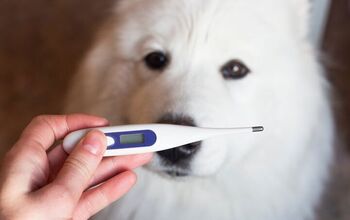
How Can I Tell If My Dog Has a Fever?
High fever is no joke, and can be quite serious – both for people and their furry four-legged friends. Yes, dogs can have a fever too, and it can be a much more serious condition for them than it is for us. Unfortunately, fever is not an ailment you can spot with your bare eye. Because of this, you will need to thoroughly observe your pet’s behavior and learn how to spot those little details that indicate a fever. Read on as we go through the basics of dog fever and just how to tell if your pet needs your help.Symptoms of Fever in DogsDogs, like humans, can develop a fever as a response to illness or infection. It’s the body’s natural way to fight off the “intruders” in the body. Fever comes in many forms and for various reasons. You can tell if your dog has a fever by observing their behavior and checking for physical signs. Here are just a few of the most common indicators.Increased Body Temperature:

Amazon Took Some Heat with 2023 Super Bowl Ad
Rescues and dog experts alike felt solution to separation anxiety was a total fumble. Can they recover this year?

How to Tell Your Cats Are About to Fight, According to Scientists
Have you ever wondered if your cats are play fighting or fighting for real? People living in multi-cat households know that the occasional scuffle or a full-blown cat fight is bound to happen. However, many cat owners have a hard time figuring out whether their cats are fighting or roughhousing. A new study published in Scientific Reports can provide some clues. As it turns out, certain behaviors could indicate whether an interaction between two felines is friendly, aggressive, or something in between. In this study, scientists, including Noema Gajdoš-Kmecová from the University of Veterinary Medicine and Pharmacy in Košice, Slovakia, analyzed 105 videos of interactions between 210 cats. The videos were obtained directly from cat owners and YouTube. After watching around one-third of the videos, Gajdoš-Kmecová pinpointed six types of specific behaviors, including wrestling, chasing, staying still, vocalizing, interactive, and non-interactive activities. She then watched all the videos again to see which cats exhibited one of these specific behaviors and for how long. After running a statistical analysis, Gajdoš-Kmecová was able to identify three distinctive types of interactions between the cat pairs - playful, intermediate, and aggressive. To confirm her findings, other members of the research team also watched the videos and classified each interaction between cats. Over half of the cats from the videos, 56% to be exact, exhibited playful interactions. According to the study, playful interactions included wrestling and a lack of vocalization. About 29% were labeled as agonistic, meaning they exhibited any type of social behavior that included threatening, aggression, and submission. Cats in this group vocalized and exhibited recurring bouts of inactivity.The cats in the intermediate group were involved in both aggressive and playful encounters. According to researchers, this group showed prolonged exchanges of specific behaviors, like laying on the back with the belly exposed, pouncing, stalking, and grooming each other. Scientists believe that this mixture of playful and aggressive behavior may be a sign of short-term friction between the cats rather than the end of the relationship. “This might escalate into a fully agonistic encounter but does not necessarily reflect a breakdown in their social relationship but rather a short-term disagreement in social priorities,” researchers wrote in the study. This study is the first to apply a scientific approach to cat behavior that can be identified by experienced and first-time owners alike. Thanks to this study, scientists can now classify inter-cat interactions as either playful, agonistic, or intermediate. “Wrestling can be a sign of a fight but if it comes with bouts of inactivity then that often means it is playful,” explained Profesor Daniel Mills, who led the study.“Playfighting is also without vocalizations. That’s the profile of a friendly cat. The agonistic cat, they might not do as much wrestling with inactivity but they do lots of vocalization.”“Owners should keep an eye out on how much they are wrestling and whether or not they’re vocalizing. Vocalizing can be broad and include meowing and also yowling,” he added. We all know when cats are fighting fur real, but it’s important to recognize intermediate interactions, where things could end in play or escalate into a real fight. “A lot of cats end up at cat rescue centers because the owners think that they’ve fallen out. In the clinic, I’ve seen cats that are playing and the owner thinks it’s a real fight,” said Professor Mills. If your cats are really getting along (share food and toys and sleep together), an occasional bout of agonistic play is okay. But if your cats aren’t the best of friends, you should look for signs of agonistic behavior. Join the PetGuide community. Get the latest pet news and product recommendations by subscribing to our newsletter here.

Is a Cat Tree Necessary for My Cat?
When you first bring home a new cat, it’s an exciting time – especially if you’re a first-time cat parent. However, amidst the excitement, there are many questions that may be holding you back from fully embracing the joy. Are you prepared to meet all your cat’s needs? Are there “must-have” items you have overlooked? The struggle is real! We have good news… Many of the items that are deemed “necessary” are actually optional. One such item is the traditional cat tree or cat scratcher. Do they offer benefits? Yes! Can they help to improve your cat’s mental and physical health? Yes! But is a cat tree necessary for your cat? No, it’s not. There are other ways you can meet your cat’s needs if your budget or space doesn’t allow for a large piece of cat furniture. Let’s dig into the truth about cat trees and your cat. What is the Point of Cat Trees? If you’re currently standing in your local pet store, looking over the wide assortment of cat furniture available, you may wonder – what exactly is the purpose of cat furniture? Is it just a fancy bed solution for your cat, or are there other considerations when these products are developed? It’s an honest question I often hear from first-time cat parents. After all, these large, elaborate structures often come with a hefty price tag. If they do nothing more than provide a place to sleep, wouldn’t a simple cat bed suffice? Cat furniture is designed to meet many of your cat’s instincts, including their need to scratch, hide, climb, and oversee their surroundings. Each type of cat furniture has its benefits to consider.

AI Could Match You with a New Furry Friend Based on Personality
In a cutting-edge study, scientists specializing in canine behavior have used artificial intelligence to predict dog personality types. A multi-disciplinary research team has developed an AI algorithm that simplifies the painstaking process of evaluating canine personalities.Understanding a dog’s temperament is key not only for pet owners but also for training agencies and professionals working with working dogs. The study, which introduces a brand-new method of predicting and categorizing dog personalities, is published in the eminent journal Scientific Reports. The team that developed the algorithm hopes that it will more quickly and accurately evaluate which dogs are better suited for long-term careers, such as assisting people with disabilities and helping law enforcement. This new approach to predicting dog personalities could also be used to match owners with a new furry best friend. The new AI algorithm can help shelters place dogs in the right homes, thus reducing the number of dogs returned for not being the right fit for their adoptive families.Before this algorithm, canine behavioral experts used questionnaires and statistical analysis to determine a dog’s personality. The AI algorithm uses data from almost 8,000 responses to the commonly used Canine Behavioral Assessment and Research Questionnaire (C-BARQ). The C-BARQ questionnaire has been the top resource for evaluating working dogs in the past two decades. “C-BARQ is highly effective, but many of its questions are also subjective,” said James Serpell, a professor of ethics and animal welfare emeritus at the University of Pennsylvania School of Veterinary Medicine. “By clustering data from thousands of surveys, we can adjust for outlying responses inherent to subjective survey questions in categories such as dog rivalry and stranger-related fear.”The team’s new AI algorithm gathers the responses to C-BARQ questions into five main categories that essentially form the digital personality of a dog. The results showed five distinctive personality types among domestic dogs, including excitable/attached, anxious/fearful, reactive/assertive, aloof/predatory, and calm/agreeable.The study was conducted over two years by a multi-disciplinary research team consisting of Dr Mohammad Amirhosseini of the University of East London and Professor James Serpell of the University of Pennsylvania School of Veterinary Medicine. The research was sponsored by Dogvatar, a Miami, Florida-based canine technology startup.“This innovative AI-based methodology holds promise for revolutionizing the selection and training of dogs for specific roles, both for working and non-working,” said Dr Amirhosseini. Almost 50 percent of people who surrender their dogs to animal shelters in the USA say that behavioral problems are a contributing factor, and nearly a quarter say that those problems are the main reason for giving up their dog. More research is needed to understand the nuances of canine personalities. However, researchers hope to promote strong bonds between people and their dogs by designing effective training programs and customized dog-owner interactions. According to researchers, these findings could serve as a foundation to explore personality matching between dogs and their owners and how that might improve the quality of their relationship.Dogvatar and the research team plan to conduct further research into potential uses for their dog personality testing algorithm.“This has been a really exciting breakthrough for us,” said Dogvatar CEO Piya Pettigrew. “This algorithm could greatly improve efficiency in working dog training and placement process and could help reduce the number of companion dogs brought back to shelters for not being compatible. It’s a win for both dogs and the people they serve.” Join the PetGuide community. Get the latest pet news and product recommendations by subscribing to our newsletter here.

Once-Abused Dog Celebrates First Christmas With Vet Who Saved Him
A puppy who survived a terrible beating has celebrated his ‘first proper’ Christmas with a veterinarian nurse who provided a loving furever home for him.A whippet named Terry was only 12 weeks old when he was viciously attacked by his owner and left with severe trauma injuries after he urinated inside. The injured pup was taken to the Hull PDSA Animal Hospital in East Yorks, England, where he was treated by the veterinary nurse Rachel Coombes. During the initial exam, the hospital’s staff discovered that Terry had a bruised eye and lips. The pup was also missing three of his upper incisors, and another tooth was broken.For nurse Coombes, this was love at first sight! She told her colleagues that if Terry survived, she would adopt him, and that’s exactly what she did.Although Terry celebrated Christmas with Rachel and her son Stanley last year, this year was their ‘first proper’ Christmas together since Terry is now fully settled in with the family.“I just felt a connection as soon as he was brought in as he was in such a state we actually thought initially that he hadn’t made it,” said nurse Rachel according to Talker. “Then when we spotted gentle breathing I did say ‘if he survives this I’m going to give him home’ which is exactly what I did.”From that moment on, Terry’s life changed completely! “He hasn’t looked back since - he loves life and is having the best of life right now.” According to his new owner, Terry likes to run around the garden and enjoys going to the beach. The pooch has also formed a strong bond with Rachel’s son, Stanley, and is always by his side. “Last year, we got him around Christmas, but it was such a hectic time for him, and he was learning to settle then.” But this year, the family planned a festive celebration for Terry and did everything to make him feel special during the holiday season. Due to the suspicious nature of Terry’s injuries, RSPCA Inspector Laura Barber was asked to investigate. The inspector said that despite the severity of his injuries and his overall state, Terry had put his head on her and was so trusting. “He was in such a sad state and was really quiet and withdrawn when he was with people. He was so lovable, and it is great to see he has a home he deserves with such a lovely family.”“I know Terry will have the best first proper Christmas with his lovely new family and one he thoroughly deserves,” the inspector added. Terry’s extensive injuries were enough to build a case against his former owner. After appearing in court and admitting to causing unnecessary suffering to a dog, the person was handed a five-year ban on keeping animals. Emily Lomas, an animal care assistant at RSPCA’s Hull branch, said she was thrilled when she learned that Rachel had adopted Terry. “He was very traumatized and overwhelmed when he came to us, we had to really show him there was nothing to be scared of and that he was now safe. We took him to the socialization room, and I remember him falling asleep on my legs,” said Lomas.“We were all thrilled when he was adopted and knew he was going to a special home,” she added.Join the PetGuide community. Get the latest pet news and product recommendations by subscribing to our newsletter here.

How Can I Reduce My Dog's Environmental Pawprint?
In today’s day and age, with the climate and environment at great risk, we want to do anything we can to minimize our own carbon footprint and the damage we do to Mother Nature. Of course, our pets also have an environmental impact – and eco-conscious pet parents are always on the lookout for simple ways to reduce their pet’s carbon footprint (or pawprint if we’re being precise). Luckily, there are a lot of small but important steps that you can take in order to make your pet’s lifestyle and care much more eco-friendly without compromising the quality of life they are used to. Here's where to start if you want to become a more eco-friendly, sustainable dog owner!5 Ways You Can Reduce Your Dog's Environmental PawprintCaring for your pet can be challenging, and that’s no secret. However, the things that make it easier are not often very good for the environment, and can make your pet’s environmental pawprint significant. Luckily, it does not take too much of a change to turn that completely around and start improving that environmental impact, day by day. What follows are just a few of the basic steps you can take as a caring and responsible owner.#1 Be Responsible About Your Pet’s Waste Disposal:

Dave Bautista Teams Up With the ASPCA for Giving Tuesday
With an estimated 3.1 million dogs entering U.S. animal shelters every year, the need for funding and support is evident. For many, this is a call to action to find ways to make a difference – including for Guardians of the Galaxy actor Dave Bautista. Starting today, November 28th, the American Society for the Prevention of Cruelty to Animals (ASPCA) is launching a new fundraising and awareness campaign with 54 Bautista and his four rescue pit bulls in the spotlight. The campaign was created as part of Giving Tuesday, a global response to the corporate focus of Black Friday (as well as Small Business Saturday and Cyber Monday). Rather than highlighting sales and taking advantage of deals through your favorite stores and brands, Giving Tuesday encourages Americans to take a moment and consider how they can make a difference in the lives of others – including, of course, animals in shelters and rescue organizations. Bautista’s involvement in the campaign is motivated by his experiences with animal rescue and its impact on his life. “My home is where my dogs are because there is just such a sense of love,” Bautista stated. “I feel like wherever they are, there’s this sense of normalcy, which is hard for me to attain these days.” He went on to explain, “My first rescue dogs were Ollie and Maggie, and I’ve had them for about five years. I adopted them, and after becoming so connected with them, I started to be more aware of how many dogs are just waiting for someone to give them good, loving homes. You get so much in return when you adopt a pet, and I’m going to preach adoption for the rest of my life.”

New Survey Ranks America's Top Dog Breeds by State
There’s no doubt about it - Americans love their dogs! We know that your pooch is the best breed, but have you wondered which are the most favored dog breeds in America? Forbes surveyed 10,000 dog owners across the 50 states to find America’s top dog breed. The survey involved the top 25 most popular dog breeds nationwide, according to the American Kennel Club. So, what is America’s top dog? As it turns out, “no breed in particular” is the country’s favorite at 13%.However, if Americans had to decide, they’d pick the Australian shepherd as a favorite, followed by the German shepherd and the bulldog.The highly intelligent and energetic Australian shepherd was ranked as the top dog breed in 10 states, including Alabama, Arizona, Alaska, Arkansas, Georgia, Indiana, Montana, Missouri, New York, and Virginia. This breed was also voted the second favorite in nine states. Although Aussies won the popularity vote, the German shepherd was the number one pick in 16 states. That’s more than any other breed!Known for its loyal and courageous nature, the German shepherd is the most common breed to serve as a police K9 but also makes a wonderful family companion. They ranked as the second favorite dog breed in nine states. Interestingly, more men than women picked German shepherds as their favorite breed (9% compared to 6%). America’s 3rd favorite breed, according to Forbes, is the bulldog. The English bulldog is a medium-sized dog breed, best known for its stocky build, large head, and wrinkled face. The bulldog ranked as the top dog in eight states, including Illinois, Connecticut, Missouri, Mississippi, North Carolina, South Carolina, West Virginia, and Utah. Among all states, Nebraska ranked the bulldog lowest, placing this breed at 24th place, The lovable and friendly Labrador retriever ranked as the nation’s 4th favorite breed. Thanks to their affectionate, friendly, and energetic nature, Labs make great companions to people of all ages and families with children. Labrador retrievers ranked as the most favorite dog breed in 10 states, including Louisiana, Idaho, Minnesota, Montana, Massachusetts, Nebraska, New Hampshire, Oregon, South Dakota, and West Virginia. Bernese mountain dog is the 5th favorite dog breed in the United States. Large in size and built for hard work, Bernese mountain dogs are easy to train and make affectionate, loyal, and faithful companions. So, it’s no surprise that this doggo ranked as the most favorite breed in nine states. Compared to four other top-ranked breeds, the Bernese mountain dog had the most varying results, with 10 states ranking this breed in the bottom 10.The beagle is the nation’s favorite small breed. Ranked as the 6th favorite breed overall, the beagle was placed in the top 10 favorite breeds in all but seven states. This breed received the lowest ranking in Utah, where it was voted as the state’s 3rd least favorite breed.The golden retriever comes in at 7th place, after being voted as the most favorite dog breed in Michigan and Wisconsin. Medium in size and best known for their gorgeous golden coats, golden retrievers are loving, loyal, and affectionate companions to active people and families with children. Goldens were the 2nd favorite dog breed in four states, including New Hampshire, North Dakota, Connecticut, and Vermont. This breed ranked the lowest in Alabama, where it received 17th place.These are America’s most favorite dog breeds, but the nation also has the least favorite doggo. This title goes to the Havanese, which was the bottom-ranked breed in 33 states.The Havanese is followed by Pembroke Welsh Corgi which was the least favorite dog breed in 17 states. And what about you? What’s your favorite and least favorite dog breed?Join the PetGuide community. Get the latest pet news and product recommendations by subscribing to our newsletter here.

Playing with Dogs Helps People Concentrate and Relax, Study Finds
Numerous studies have investigated the bond between humans and dogs, showing that canine companionship offers physical and emotional benefits, such as reduced blood pressure, increased oxytocin levels, and decreased levels of the stress hormone cortisol. However, few studies have looked at what happens in a person’s brain when they interact with a dog. A new study, led by researchers in South Korea did just that!In this study, researchers measured the participant’s brain waves during interactions with a four-year-old standard poodle, named Aro. The team wanted to find out how specific activities affected the participants’ mood.The study involved 30 healthy participants who were asked to engage in eight distinct activities with Aro. The activities included meeting, playing, massaging, feeding, grooming, hugging, photographing, and walking the dog. Before the activities began, the participants were asked to sit and stare at a wall for three minutes to minimize any stimulation that could affect the study’s results. The researchers used headsets of electrodes to measure participants' brain wave activity while they interacted with the dog. The results showed that activities like walking the dog increased relaxation while brushing the dog improved concentration. Interestingly, playing with the dog increased both concentration and relaxation. “Previous studies of the potential benefits of animal interactions often take a holistic approach, comparing people’s mood or hormone levels before and after spending time with a dog,” explained Onyoo Yoo, the study’s lead author, and researcher at Konkut University in South Korea. “It is a significant finding that engaging in certain activities with dogs can increase specific brain activity,” he added, according to NBC News. Yoo’s team asked the participants to engage in eight activities, for three minutes each, while wearing brainwave-detecting headsets. The participants also needed to complete surveys after each activity, describing how they felt emotionally.The team discovered that alpha brain waves, which indicate relaxation and stability, became stronger when participants played with Aro using squeaky toys and when they took her for a walk on a park trail. These results showed that participants were in an increased state of rest and relaxation. On the other hand, beta brain waves, which are associated with attention and concentration, became stronger when participants brushed Aro or gave her a gentle massage. This showed that participants’ concentration improved without an increase in stress. All participants reported feeling less stressed, tired, and depressed after all eight activities. According to the study, activities such as hugging, feeding, and massaging the dog improved the participants’ moods, in particular. “This study demonstrated that specific dog activities could activate stronger relaxation, emotional stability, attention, concentration, and creativity by facilitating increased brain activity,” said Yoo. “In addition, interactions with dogs could decrease stress and induce positive emotional responses.”For example, playing with a dog not only relaxes the mind but also increases concentration. This dual effect shows that dogs could play an important role in therapies designed to reduce stress and improve mental focus. Past studies have suggested that dogs could help ease symptoms of depression or PTSD, but it’s still unclear how effective that type of pet therapy may be. Researchers agree that people need to enjoy being around dogs for this type of animal-assisted therapy to work. More studies are needed to confirm the validity of these findings. But if you already have a dog, there’s now even more evidence supporting interaction with your pet. So go ahead and take your dog for a walk or a play session in the park, you’ll both feel better after it!Join the PetGuide community. Get the latest pet news and product recommendations by subscribing to our newsletter here.

American Airlines Makes It Easier To Travel With Pets
They say to travel is to live, but deciding to leave a beloved pet at home can make you feel guilty - and bringing them along on an adventure can be tough on the bank account. No one truly wants to leave their four-legged best friend behind and figure out whether to hire a pet sitter or look for a boarding facility, but airlines don’t always make it easy for pet parents to travel with their fur babies.Finally, there’s some good news for pet parents and their four-legged companions! American Airlines has changed their pet policy, making it easier and more affordable for pet owners to fly with their fur babies.“On flights with American, you can bring one pet carrier as a carry-on if: You pay the carry-on pet fee; Your pet stays in the pet carrier and under the seat in front of you the entire flight,” shared American Airlines’ on their website. The company added that passengers can also bring “only one additional item on board with your pet” which can be a small personal item like a handbag or a purse, or a carry-on bag that meets the airline’s requirements and fits in the overhead bin compartment. The important thing to note is that you can only bring one with your pet carrier, not both.In the past, people who traveled with pets could only bring one small personal item abroad, which could fit under the seat. Anything bigger than that - for example, a larger carry-on bag that usually goes in the overhead bin - had to be checked, which was an additional $35. As an alternative, pet owners could transport their pets in the cargo hold if they wanted to take a bigger bag with them on the flight. Thanks to recent policy changes, people traveling with pets can now bring a pet aboard and choose whether they’ll travel with a carry-on bag or a personal item. At the same time, no changes to American Airlines' pet travel fee have been made. According to the company’s website, the fee remains fixed at $150 and applies per kennel, each way. For now, pet strollers must be checked at the ticket counter, and all checked bag fees apply. There are a few things to keep in mind before flying off into the sunset with your four-legged friend. All airlines are different. Every airline has its own policies for traveling with pets, so be sure to check the specific restrictions and fees on your flight before you book the tickets. Southwest, JetBlue, Delta, Alaska, and United are a few other airlines that allow pet travel, but each has its own travel requirements. Each airline specifies what pets can travel where. There are also limitations on the number of pets a passenger can bring abroad on different aircrafts. Only two pets in the same carrier can come aboard for American Airlines flights. Don’t forget that capacity is limited, meaning that checked pets are accepted on a first-come basis. Country-based restrictions also apply, and people traveling with pets should check and understand destination restrictions when traveling abroad.Lastly, whatever airline you decide to fly with, you have to find your pet an airline-compliant carrier. Without the right pet carrier, your fur baby won’t be able to fly on a plane with you. There is a lot to think about when traveling with a pet. But all will become worth it when you touch down and start making fun and exciting travel memories with your four-legged companion. Join the PetGuide community. Get the latest pet news and product recommendations by subscribing to our newsletter here.

These Are The 10 Most Common Male and Female Dog Names, Survey Reveals
Naming a new puppy that’s come into the world or thinking of a name to symbolize a new beginning for a rescue dog is a precious moment – but sometimes you need a bit of inspiration to think of a fitting name for your fur baby. Some people prefer names with personal meaning or symbolism, but most just sift through name lists in hopes of finding one that fits our pooch and sounds nice. Well, this list can help you find the most popular names for dogs these days and see if any of them stick! Sniffspot, the so-called “AirBnB of dog parks”, went through their massive database of 100,000 dog names and through hard work determined the 10 most common boy and girl dog names. The results are very interesting – take a look!Here are the top 10 male dog names:10. Leo:A very unique name that’s quick on the tongue, and very fitting for large and majestic doggos. A lion always comes to mind.9. Ollie:Believe it or not, Ollie is a gender-neutral name, but fits perfectly with energetic and goofy male puppers.8. Moose:Who would think that Moose is such a common dog name? It is fun, that is for sure, and strangely fitting too.7. Zeus:The mighty God of thunder in Ancient Greece has come a long way over the centuries. Nowadays, his name is given to dogs!6. Oliver:A classic, elegant, and fun name that, although used for humans, fits doggos as well. 5. Finn:An old-timey name that belongs on the pages of some good youth novel, Finn is remarkably fitting for puppers.4. Loki:The trickster god of the Old Norse has found his way into the modern age in a rather odd way. Lately, Norse gods are a popular choice for dog names.3. Bear:How adorable would it be to name your tiny little pup Bear? 2. Cooper:A simple but very fun name that works well for male pets of all characters and sizes.1. Milo:A very ancient-sounding name, Milo is the number one choice of many owners. Are you surprised that this is number 1? Well, you saw the most common names for boy dogs, so now it’s the girls’ turn. Let’s see their list!10. Sadie:This adorable female dog name, it brings to mind the summer, flowers, and all things girly.9. Nova:In stark contrast to Sadie, Nova sounds quite futuristic, and strong, and rolls easily off the tongue. Did you know that a Nova is an astronomical term? It is the name given to bright stars that appear suddenly in the sky and release powerful energy. Wonderful symbolism.8. Willow:Back to vintage and cozy-sounding names with Willow, a true classic that belongs to the pages of an old children’s book.7. Nala:Here’s a name that is quite a surprise. It is unique, modern, and not heard that often. But, according to this survey, it belongs with other most common female dog names!6. Stella:A name of Latin origin, it translates to “star”. And what better name to give to your zoomy, fun, and lovely female pup?5. Bailey:This is another fun and homely name that is often given to pets. Any similarity with a favorite drink is pure coincidence!4. Lucy:If you have a kind, loveable, and gentle female doggo, then you cannot go wrong with a name such as Lucy!3. Daisy:This is one of the most popular names given to animals, especially cows. But surprisingly, it works well for dogs too!2. Bella:A classic feminine name, Bella is ideal for all female puppers, no matter their character.1. Luna:And the number one female dog's name is Luna, which is Latin for “Moon”. It is simple and pretty, which makes it an easy choice for many owners!So, were you surprised by this survey? What is your favorite dog name? Let us know!

Golden Retriever Nurses African Painted Dog Pups Rejected by Their Mom
The Potawatomi Zoo in South Bend, Indiana, recently welcomed a litter of eight endangered African painted dog puppies. After a rough start, only three puppies survived thanks to an unlikely surrogate mother - a golden retriever named Kassy.The Potawatomi Zoo announced that the pair of their African painted dogs, Bleu and Maurice, had a litter of eight puppies born in late September. However, it was soon clear to the care team at the zoo that the pack would not be able to raise the puppies successfully.“Bleu, an inexperienced mother, was not caring for her pups the way she should have, and Maurice was following her lead,” said the zoo. In their natural habitat, African painted dogs live in large packs with unique vocalizations and social dynamics. All adult dogs in the pack work together to help feed and raise the pups. The success of the birth and raising of the pups can be endangered if the pack doesn’t work together as they should. “We knew within 24 hours that we had to separate them,” the zoo’s executive director, Josh Sisk, told the South Bend Tribune. The zoo’s animal care staff consulted with the African Painted Dog Species Survival Plan (SSP), a group of zoo professionals who form the breeding plans for this endangered species in accredited zoos across the United States. The staff at zoos usually try to remain uninvolved, letting the packs raise the puppies as they would in the wild. This approach is often successful and helps the pups learn the complex social structure of their species. However, in this case, the decision was made to intervene and hand-raise the litter. Instead of bottle-feeding the puppies, the SSP recommended finding a surrogate dog to nurse the puppies. Within a few hours, the Indiana Council for Animal Welfare connected the zoo with a golden retriever named Kassy, who recently had a litter of puppies and had milk to spare. Kassy and her litter arrived at the zoo a day after the painted dog pups were born and immediately accepted them. The zoo’s staff watched as Kessy nursed and cared for the pups as if they were her own.“It was a crazy first month,” Sisk said. “Our team was there for four weeks, 24/7. We had a mattress next to the dogs.”The zoo’s veterinarian and care team worked around the clock to ensure that all of the puppies, including Kassy’s litter, were getting enough food and time with Kassy. However, despite everyone’s efforts, not all of the African painted dog pups survived. Four weeks after the litter was born, only three puppies remained. The surviving pups were named Blue, Red, and Orange for the colors staff used to track them since they were born. Originally, the zoo planned to reintegrate the pups with Bleu, Maurice, and Colby. However, the adult dogs didn’t show a positive interest in the pups, so the plan was changed. The zoo decided to build a home for the pups next to adult dogs, so they could still learn how to behave like painted dogs. Once the puppies get older they can either be integrated with Bleu, Maurice, and Colby or moved to another zoo.“Blue, Red, and Orange have had an unusual and challenging start to life, but the zoo hopes they will have a bright and successful future,” the zoo shared in a release. “These three healthy, active pups are just the start of this story and the zoo hopes to share more positive updates of their milestones in the future.”Join the PetGuide community. Get the latest pet news and product recommendations by subscribing to our newsletter here.

Dog House Check Guide
House check procedures.
Please read this entire handout. The first part discusses HC issues to cover with applicants. The second part lists some specific items to check. Please complete & return the form at the end.
House Check basics:
- Review the application before the visit.
- Take a “dog’s eye view” of the home and yard. Imagine you’re placing your own dog there and look for any potential risks.
- Try to take the desired dog on the visit. Exercise caution if the applicants have another pet, as the animals will require a careful introduction.
- Have the whole family present for the home visit so you can observe interactions by all.
- Listen for comments about risky practices (such as letting the dog off-leash in unfenced areas).
- You do not have to approve a home visit. If you have doubts, tell the applicants that you report back to the Adoption Coordinator and they will hear from PAW within a few days.
- In some cases the application reviewer might ask you to get a contract signed and obtain the adoption donation if you feel completely certain about approving the home visit.
- When you finalize an adoption the adopter will sign the electronic contract and submit electronic payment. You may take a paper contract and a check if the adopter requests. Homes with Children: Adoptions to homes with children have a higher failure rate. Your advice can make the difference.
- Advise parents to obtain a crate before bringing a new dog home.
- Advise parents never to leave dog alone with their children or their children’s friends.
- Explain to the whole family: “A dog can’t cry or whine when he is unhappy. Instead, he may growl or try to bite.” Tell them that when a dog might be getting tired, leave him alone.
- Share the “dog/doorknob” rule: “Don’t turn the Doorknob ’til you know where the Dog is, and that she can’t run out the door. Or else she could get hit by a car!”
- Advise parents not to let young children walk dogs themselves.
- Strongly advise obedience training. Especially for first-time dog owners, ask questions:
- Have you considered how to schedule time to walk and play with the dog each day? At what times will you take the dog out for potty breaks and exercise? (Review a schedule; dogs typically should be taken outside upon waking, after breakfast, mid-day or right after work, after dinner, and before you go to sleep at night.)
- Can you always get home after work, before going out again? Do you have a reliable pet-walker or neighbor to take your dog out when you can’t get home on time?
- For puppies, who will feed and walk midday so the pup can get housetrained?
- Are you prepared to clean up after a shedding dog? Can you move things out of the dog’s reach? If the dog chews carpets, shoes, table legs, chairs…how will you deal with this?
- How will you manage an animal who might go through adjustment problems in your home?
- Are you willing to take the time to teach your dog acceptable behavior with consistent, positive reinforcement? If you plan to do the adoption at the end of the home check, do the following in advance:
- Provide the dog’s collar size (PAW may provide the collar).
- If the applicant intends to crate the dog, suggest crate sizes appropriate for the dog and stress the need to have the crate before the dog’s homecoming.
- Suggest the adopter have an ID tag ready.
- Inform the adopter of what food had been used and recommend they change the diet gradually to avoid intestinal upset.
- Ask about plans for year-round heartworm preventative and annual vaccinations.
- If the HC is approved, tell adopters PAW will mail medical records 1 week after adoption.
Reminders for New Adopters :
- Explain how to transport a dog safely and securely in a car (alternatives include a crate, a divider panel, dog seatbelt harnesses, securing the leash to something in the car). Have your hand on the leash before opening the car door. Don’t let dogs stick heads out windows while you’re driving.
- As soon as you bring your dog home, show him where to potty. Praise him when he goes there.
- Even housetrained dogs have accidents, ranging from marking to diarrhea. Be prepared with plenty of paper towels and urine-scent-killing cleaning products like Simple Solution.
- Feed the dog on a set schedule, typically twice a day, leaving the bowl down for 15 minutes. (Free feeding can lead to housetraining accidents.) You may want to feed pets separately initially.
- Use a crate for housetraining and to confine until the dog can have free rein.
- When there’s a housetraining accident, never hit or yell at the dog, or shove his nose in the mess. This worsens the problem. Keep the dog on a good feeding/potty schedule. If housetraining accidents persist, see your vet – the dog may have an easy-to-treat infection or parasites.
- On the first day, don’t stay with your dog the whole time – that leads to separation anxiety. Put him/her in a crate and leave for short periods. Gradually increase the time.
- When leaving the dog, make sure he has safe toys. Chewing is normal dog behavior. WARNING: avoid rawhides and other overly coveted chews; dogs may fight over them.
- Take hold of a dog’s collar before opening an exit door.
- Let the animal sleep on the same floor as your family. Dogs are pack animals.
- Don’t stick your face in the dog’s face until knowing the dog is settled in and you can trust him or her.
- Take obedience training from the start and read books to learn proper, humane training methods.
PAW Dog House Check Checklist Specific house and yard items to check:
Outside/ yard: __ Proximity of home to busy roadways. __ Balconies and decks: Applicants adopting small dogs may be required to install chicken-fencing or other barriers to prevent the dog from slipping through. __ Fence gates: check that latches are secure __ Fences: Walk every foot. Look for loose boards and gaps, which must be fixed and re-inspected before adoption. Warn adopters that dogs may learn to climb over chain-link fences. Chicken wire might be required at the bottom of the fence to prevent a dog digging their way out. __ A/C and electrical units: wires should not be exposed __ Window wells should be covered so dogs don’t fall in __ Pools: The pool should be securely fenced off and/or covered with a sturdy pool cover when not in use. There must be graded steps out of the pool, not just a ladder. Adopters should train the dog how to get out of the pool.
Doors & Windows: __ Screen, storm and sliding glass doors: Check all latches and require repair if needed. Advise that dogs can pop open doors and tear through screens. __ Doors: Relate the dog/doorknob advice: “Before someone opens a door, locate the dog and make sure she can’t dash out.” __ Front door: Suggest optional places to install a baby gate or other barrier to prevent escapes. __ Windows: Look for screened windows a dog may jump through and advise caution. Make sure there are no cords in which a pet can get tangled or strangled. __ Doggie doors: Advise adopter to block them when the dog is left alone in the house.
Where will the dog be kept? __ Ask where the dog will be when the people aren’t home. __ Ask where they will place a crate or baby gates; make suggestions (such as kitchen). __ Advise not to confine dog in dark, lonely areas such as basements, laundry rooms, or bathrooms. __ Ask where the dog will eat, drink, sleep, go potty, exercise.
Potential dangers: __ Look for open-structure stairs and open railings that may need to be screened or blocked for small dogs. __ Look for cords/wires on which dogs might chew and get electrocuted. __ Make sure space heaters and electric appliances are not accessible to dogs. __ Power strip outlet holes should be covered or inaccessible. __ Look for valuables/ knick-knacks that may be knocked over by a dog and ask adopters if they are willing to move them __ Basements: Check for hazards such as tools, cords, or items that can harm a dog. Ensure sump- pumps, furnaces, appliances are not accessible to dogs. __ Garages, workshops, sheds: Tell people not to allow dogs in these areas, where they can get hurt or die from exposure to tools, loose nails, poisons and antifreeze. __ Kitchen: Floor-level cabinets should be secured and toxic cleaners out of the dog’s reach.
General observations: __ If they have other pets do they look healthy? __ Observe water bowls, toys, and bedding. How clean is the kitty litter box, dog crate or bird cage? Is the litter box and cat food out of the dog’s reach? __ When a dog is brought on the visit, observe the people’s responses to the dog being in the home. __ Before approving a HC, ask yourself if you would entrust your dog to these people.
PAW Housecheck Volunteer Certification
Please complete, sign & return the section below to the PAW Dog Coordinator.
I ____________________________________(print name here) certify that I have read the Partnership for Animal Welfare House Check Guide & Checklist, understand its contents and will respect PAW policies.
Signature _________________________ Date ____________ Thank you for volunteering with PAW and for helping animals.
<< Back to Volunteer Area Main Page
Skip to main content
How to Prepare for an Adoption Home Visit
7 tips for acing your inspection and bringing your new pup home.

share article

Your pet wants you to read our newsletter. (Then give them a treat.)
Sign up for product updates, offers, and learn more about The Wildest, and other Mars Petcare brands . Must be over 16 years to sign up. See our privacy statement to find out how we collect and use your data, to contact us with privacy questions or to exercise your personal data rights.
So you’ve found a pet to bring into your family and filled out the adoption application opens in a new tab . Many people don’t realize that when adopting from a rescue or shelter, there is often another step before you bring your pup home: The dog adoption home visit, where a representative from the rescue or shelter visits your house or apartment. Learn all about how to prepare for this step in the adoption process and what to expect from a home visit.
What is a home visit for adopting a dog?
You may be wondering why this step is necessary after you’ve already filled out an application. Shelters and rescues want to find the right home for each animal and ensure you will be a good pet parent. A home visit is their opportunity to make sure your home is suitable for a pet and remind you of the commitment and responsibility you’re accepting. In most cases, a home visit for dog adoption is just confirmation that your new pet will be safe, loved, and cared for as a member of your family.
Why do shelters do home visits?
Rescues and shelters often schedule a home visit to help them determine if your living environment and lifestyle are ideal fits opens in a new tab for the particular dog you want to adopt. It’s important that new pet parents have the time, resources, and knowledge to provide for their pet’s needs, and a home visit allows the shelter to make sure that the dog will have the loving home they deserve.
Why is preparing for an adoption home visit important?
Your adoption home visit is your opportunity to demonstrate that you can properly care for a rescue pet. Think of the apartment pet interview like a job interview — if you don’t prepare ahead of time, you likely won’t put your best foot forward.
Preparing for an Adoption Home Visit
Everyone in your household, whether other family members or roommates, should be involved in preparing for a home visit and new pet. You should talk to children about how to help take care of the dog and how to behave kindly toward animals.
To make a good impression on the adoption agency representative, you should also come prepared with your own questions to ask to show how invested you are in the process and how much thought you’ve given to taking care of a pet.
What should I do to prepare my home?
You want to show the shelter representative that you understand the responsibility of caring for a pet and will provide your new family member with everything they need to be happy and healthy. Take time to learn how to prepare for a dog and purchase all the required supplies opens in a new tab , like a crate, water and food bowls, a collar and leash, and plenty of fun toys.
What questions will a shelter ask me during adoption?
When asked, “Why do you want to adopt a dog?” answer truthfully and openly. A home visit is often more of a conversation than a formal interview, and while your answers may not determine the shelter’s final decision, the shelter representative will still ask you multiple questions to gauge your ability to care for a dog. Be prepared for the following dog adoption interview questions and answers:
Have you had experience with this particular type of animal before?
Does everyone in your household agree to get a new pet?
Do you have children? Are they comfortable and responsible with pets?
Do you currently have any pets? Are they compatible with other animals?
Do you rent or are you a homeowner?
Do you have a yard? Is it fenced in? If not, how do you plan to provide exercise, and how often?
Where will your pet be kept during the daytime? And at night?
How do you plan to care for your pet if you need to leave town?
No matter how much you prepare, you may receive some questions during the home visit that you aren’t sure how to answer. Give an honest response, and if you don’t know the answer, admit it. The shelter representative won’t expect you to know everything, and it’s better to admit your lack of knowledge than to make up an answer.
What can I do after the home visit to further support the adoption process?
An adoption home visit is also a chance for you to ask questions of the shelter representative about your potential new pet’s history and temperament. Below are some common questions to ask when getting a dog that can help you prepare for your newest family member:
What is the dog’s history?
Are there any health issues or concerns that I should be aware of?
Do you know what breed(s) the dog is?
What have you noticed about the dog’s personality?
Is the dog house-trained? Do they already know any basic commands?
Does the dog get along with children? With dogs? Other animals?
Knowing the questions to ask before adopting a dog shows that you are engaged in the adoption process and lets the shelter know that you care about providing a proper home for the dog as much as they do.
What are some common mistakes to avoid during an adoption home visit?
Like any other kind of interview, one of the worst things you can do during an adoption home visit is to give the shelter representative the answers you think they want to hear. Be honest and open with your answers — and with your home. That means giving the representative a full tour of the house, including where your pet will eat and sleep. You should also already have supplies for your dog before the home visit to show your preparedness and commitment.
What to Expect During a Home Visit
Your adoption home visit is a chance to show that you can and will provide your new pet with a safe and loving home. We asked Melissa Giordano, Adoption Coordinator of the Sato Project opens in a new tab , to fill us in on what to expect during this step of the adoption process, so you can better prepare to make the best possible impression.
1. It’s all about state of mind
Giordano emphasizes that shelters and rescues are looking for people who want to do best by their animals.
“We’re not looking for you to have a spotless home with perfect everything because that doesn’t exist,” Giordano says. “We just want to make sure that the dog is going to be safe and that the people are open to suggestions and are going to be thinking through things that could potentially cause a problem.”
So the first thing you can do is take a deep breath and frame the visit in your mind as a chance to have a better and safer environment for a pet opens in a new tab .
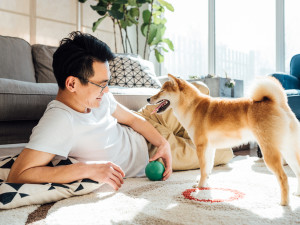
How to Puppy Proof Your Home opens in a new tab
Is your home a danger zone for a new dog? Follow these pro tips.
2. Think like a nervous dog
Giordano emphasized that a major part of her organization’s work is making sure there are no easy ways for a pet to escape their adopter’s home because animals may try and make a break for it if they’re in a new space and spooked. That means making sure that all windows and doors close securely and that you’re not relying on a screen for preventing escape; that any air conditioning units are properly anchored and the soft closures around them held firmly in place; that fences and gates (if present) are fully secure; and that there are no easily accessible tables or chairs for them to get high enough to jump over.
Your space doesn’t need to be spotless, but you need to do a decent clean-up. You want the shelter to know that you’re capable of keeping your home clean and that there’s not anything dangerous for the dog to easily get into. That means securing any garbage containers so they’re not easy to knock over and rifle through; making sure any plants you have around are pet-safe opens in a new tab ; and, if you have cat litter, making sure the dog can’t get into it. Giordano points out that things you might not even think of could be a problem: “Kids’ toys — sometimes you don’t even think about it, but puppies will chew those apart and could potentially get injured or swallow something that could get stuck.”
4. But don’t be too precious with your belongings
Animals, unfortunately, can be destructive — even if they don’t mean to be. A newly introduced dog may make messes regardless of how house-trained they are opens in a new tab as they struggle to get used to a new place. And they may chew or scratch opens in a new tab if they’re particularly nervous. So go into the adoption process with the knowledge that there might be some damage around your home, and if you have any rugs, furniture, or extremely precious belongings that you can’t stand to see possibly hurt, put them away until the animal is totally settled and you know how they’ll behave.

10 Questions to Ask a Shelter About an Adoptable Dog opens in a new tab
From exercise needs to medical history to compatibility with kids, here is everything you need to know.
5. Introductions, please
The agency will also want to meet whoever currently lives in your house — people and animals. Not every animal is suited to every living situation, so this helps them ensure that the pet is going into an environment where they will be comfortable. They’ll probably want an introduction to your family members, roommates, and any other animals onsite opens in a new tab .
6. Be prepared for in-person or over video
In large part because of the pandemic, you may be asked to do a video home visit rather than one in person. This entails dialing into a video chat where a staff member can talk to you as you walk around the house and reveal anything they need a closer look at. Or they might just want you to video a home tour on your own and send it in, which can be easier to coordinate with everyone’s schedules.
7. Be open to change
Above all else, remember that this isn’t an adversarial visit. The shelter wants you and the animal to be the best possible match so that everyone can be happy and fulfilled with one another. Any suggestions they give are so that an animal you adopt will be safer and happier — so go into the process with an open mind and a willingness to adapt, and you’ll be fine.
“The people that are coming to do the home visits are not going to judge them,” Giordano says. “We are not looking for a perfect house. We are just getting a sense for the person or the family to make sure that it’s a match for our dog and that they’re able to give our dog the best, safest, and most loving home.”
What are the reasons for denying pet adoption?
Not every pet adoption application is accepted, and shelters have a number of reasons for denying an adopter. For example, if you work long hours, the shelter may be worried that the dog will spend too much time alone and won’t get the love and care they need.
Some other reasons for denying pet adoption include:
Your home doesn’t have a fenced yard or is too small for the dog
You already own several pets
You are too young (in college or younger) and may not have time to commit to a pet
You are too old and may not be able to properly care for a pet
You have young children in the home
Your current pets are not up-to-date on vaccinations and care
None of your current pets are spayed or neutered
Remember that every pet and every situation is different. The shelter just wants to find the best possible home for each dog in their care, and reasons for denying an adoption are in the pet’s best interests.
FAQs (People Also Ask)
Preparing for your home visit shows that you are ready for the commitment of caring for a pet.
Prepare your home by purchasing the supplies opens in a new tab you need to make your home safe and comfortable for your dog. Get rid of anything opens in a new tab that could be dangerous opens in a new tab to a pet.
How can I make a good impression on the adoption agency representative?
Be enthusiastic about the process, answer questions honestly and openly, and ask your own questions.
Should I involve my family members in the preparation process?
Family members should be involved because everyone in the household should be on the same page when bringing a pet into the home and should know what to expect.
Avoid giving answers you think the representative wants to hear. Instead, give accurate and honest answers.
How can I handle any unexpected questions or situations during the visit?
If you don’t have an answer to a question or are unsure, admit it. The representative will appreciate your honesty.
After your home visit, continue to prepare your home for a new dog by purchasing supplies and asking the shelter questions about your new pet.
There are multiple reasons for denying pet adoption, including a lack of space, too many current pets, young children, and pets that are not spayed or neutered.
References:
How to Adopt a Dog opens in a new tab
Muttville – How to Adopt a Dog opens in a new tab
Korean K9 Rescue – Adoption Process opens in a new tab
Rescue Dogs Rock NYC – Application Process opens in a new tab
Sample Interview Question for Screening opens in a new tab
Guidelines for Screening Potential Adopters opens in a new tab
Home Visit Check List opens in a new tab
- dog opens in a new tab
- dog adoption opens in a new tab
- new dog opens in a new tab
- cat adoption opens in a new tab
- cat opens in a new tab
- cat safety opens in a new tab
- dog safety opens in a new tab
- new cat opens in a new tab
- puppy opens in a new tab
- rescue opens in a new tab

Tim Barribeau
Tim Barribeau is a freelance writer, editor, cat dad, and “help your boyfriend buy a suit that actually fits for once” consultant. He was previously the Style and Pets editor at Wirecutter , and has bylines at a bunch of publications that don't exist anymore (and a couple that still do).
Related articles

Get the Inside Scoop on Adoption Applications
Ready to take the plunge? Here’s everything you need to know about applying to adopt a pet.
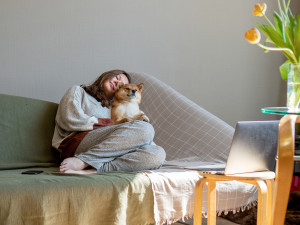
Money Talks: The Dollars of Dog Parenthood
We crunched some numbers and yup, they’re worth every penny.
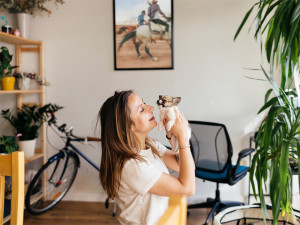
9 Unexpected To-Dos for New Pet Parents
Sound advice from seasoned dog and cat parents who have been there.

10 Things to Consider Before Adopting a Pet
It’s a big decision, so check these boxes before you sign on the dotted line.

- Available Dogs
- Adoption Applications
- Our Amazon Wish List
- Foster Applications
- Volunteer Applications
- OUR SUPPORTERS
- TESTIMONIALS
Welcome to From Alone To Home Rescue
Find your new family member- rescue and save a life.

Dogs Live for Love
From Alone To Home Rescue is a non-profit 501(3)(c) EIN: 92-2277002 foster-based rescue dedicated to rescuing dogs that are homeless, owner surrendered or at risk of being euthanized in the shelter system. We are a small rescue group made up of volunteers, family and friends united by their shared love of dogs and dedication to making a difference.
Our goal is to create a world where dogs are loved, respected, free from cruelty and unnecessary suffering. We work hard to reduce euthanasia and are dedicated to their rescue, rehabilitation. We believe we can find every dog a loving and safe home.
“𝓐 𝓱𝓸𝓶𝓮 𝔀𝓲𝓽𝓱 𝔂𝓸𝓾, 𝓲𝓼 𝓪 𝓱𝓸𝓹𝓮 𝓯𝓸𝓻 𝓽𝓱𝓮𝓶“
Every Puppy Deserves a Chance
- Medical Care
- Food & Shelter
- Spay/Neuter Services
Up Coming Events
Please come visit From Alone To Home Rescue at our posted events.
Drop us a line!
This site is protected by reCAPTCHA and the Google Privacy Policy and Terms of Service apply.
Better yet, see us in person! We will be posting our scheduled events
We love our volunteers and adopters so please feel free to reach out anytime.
From Alone to Home Rescue
For General information: [email protected] For Adoptions Applications or Inquiries: [email protected] For Volunteering: [email protected] For Fostering Applications: [email protected]
If this is urgent, please let us know and someone will get back to you.
Copyright © 2024 From Alone to Home Rescue - All Rights Reserved.
Powered by GoDaddy
This website uses cookies.
We use cookies to analyze website traffic and optimize your website experience. By accepting our use of cookies, your data will be aggregated with all other user data.
Skip to content
- Helping Shelters, People and Pets
- Investigations and Rescue
- Animal Care and Recovery
- Improving Laws for Animals
- The Puppy Industry
- Protecting Farm Animals
- Advancing Horse Welfare
- ASPCA Grants
- New York City
- Los Angeles
- Asheville, NC
- Oklahoma City, OK
- Ways to Give
- Get Involved
- Find More Humane Food
- Adopt a Pet
- Advocate for Animals
- Receive Text Updates
Primary Nav Menu
Search form, adoptable dogs in your local shelter.
Use the nationwide database of dogs looking for good homes below! Search by zip code to meet available dogs in your area. Please note, these dogs are from rescues and shelters nationwide and are not available through the ASPCA. If you live in New York City and are hoping to adopt from us, check out the dogs available at our Adoption Center.
Powered by RescueGroups.org
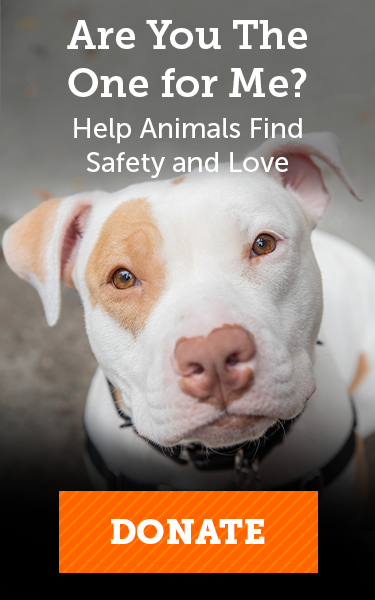
Other Ways to Help:
- Become a Monthly Member
- Join the Advocacy Brigade
- Volunteer or Foster
Share this page:

Help the ASPCA Put a Stop to Animal Cruelty

Adopt a NEW FRIEND for life and become a part of our supportive community.
We take adoptions seriously..
We carefully screen potential adopters, getting vet and landlord checks where applicable, and conducting virtual home visits to match our dogs with aligned families. Once someone adopts from us, they become a part of our community and we stay connected to support them (and gush over future photos of our happy dogs), often offering training resources, volunteer opportunities, and community ties that last years.
- Our dogs are adopted out up to date on vaccinations and spayed/neutered.
- We adopt our dogs all over—not just in Maine.
- We stay connected after adoption for support.

Please review our foster and adoption policies before submitting an application.
Adoption Pricing:
Puppies (Up to 6 Months): $550
7 Months and up: $450
Ready to Adopt?
Your application process will include a vet check on existing or recently past pets, a landlord check if you rent, and at least one virtual home visit.
Dogs Available for Adoption
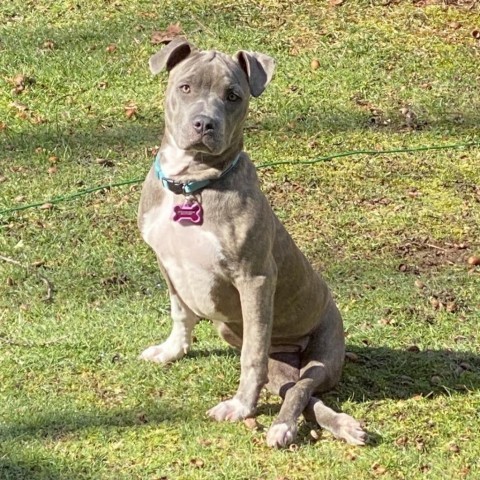
- Mixed Breed
- Vaccinations up to date
This sweet baby was set to be euthanized due to her handicap. Dolly is 6 months old, as of the... View full description »
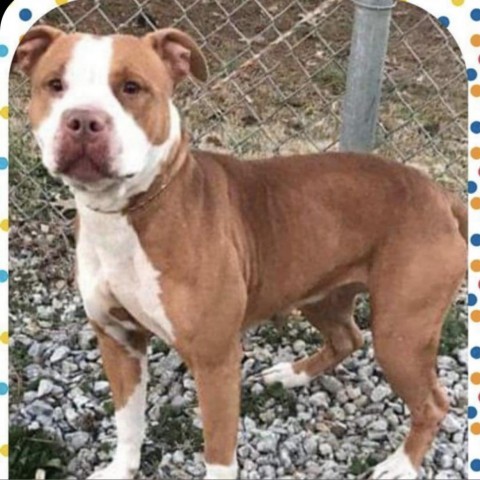
- Spayed/Neutered
This gorgeous beauty is Tamera. She is estimated to be around 4 years old and has just taken her freedom... View full description »

This little sweet potato is SPUD muffin! He is 4 and is setting in after his recent Freedom Ride. Spud... View full description »

Leslie is the SWEETEST lil pittie you've ever met. She is around 5 years old and waited a long time... View full description »
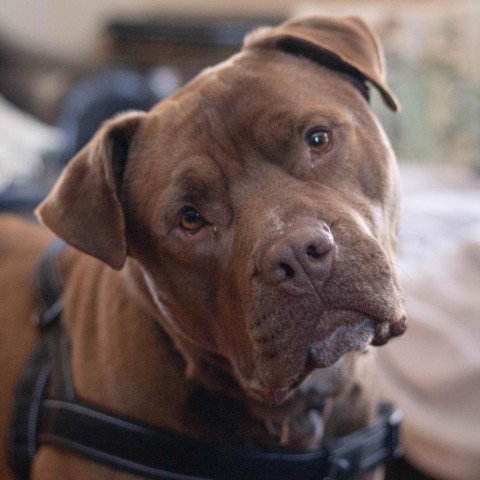
This big hunk is Clyde! Clyde is estimated to be 2 years old but has the heart of a puppy!... View full description »
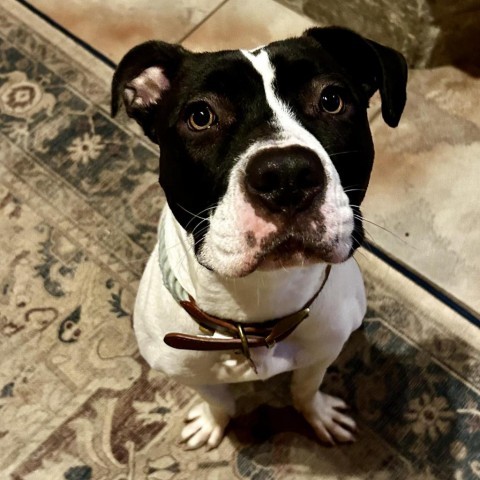
Just look at that face! Bunny is estimated to be around 3 years old and is loved by everyone she... View full description »

Here's Miss Bonnie. This 4 year old sweet girlie is so happy to be here in Maine that she can't... View full description »

- English Bulldog
Here's Lana!! This sweet, smart, affectionate, playful lady is 4 years old. She likes to be with her people and... View full description »
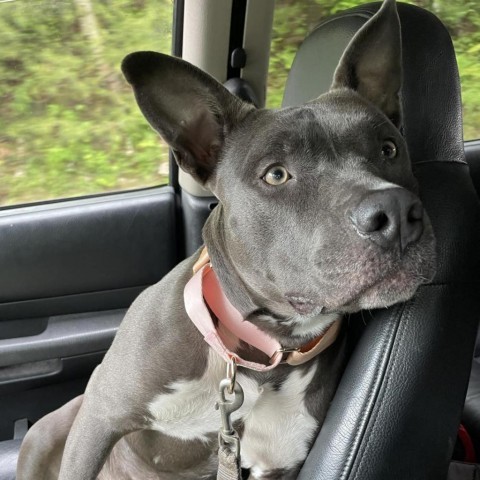
- Pit Bull Terrier
Here is Ms. Rey! Rey is 3 years old and has the best ears around and knows how to use... View full description »

Hello, I'm Halo! I'm 2 and full of spirit. I'm sweet, friendly, and I love to explore. I'm a little... View full description »

Re-introducing sweet Inu! Inu is 4 years young and is coming back to us after her previous adopter was unable... View full description »
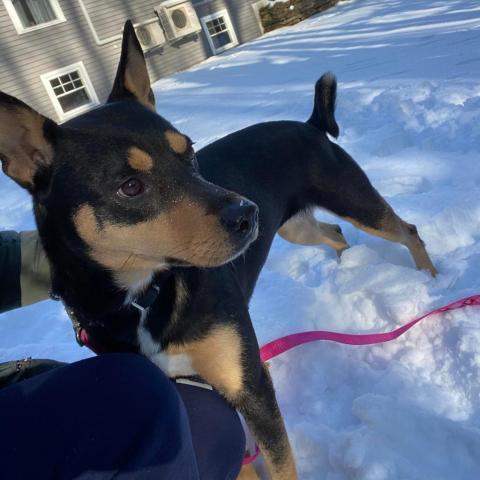
- Cattle Dog, Pit Bull Terrier, Mixed
Meet Rory! Rory is a little couch potato who is 4 years old and only 44lbs! Rory is the perfect... View full description »
Follow us on Facebook for the latest!

Rescue Updates, Foster Needs, New Adoptions & More
DoN't Miss A Thing — Join Our Newsletter Now!

HOME | ABOUT | ADOPTIONS | RESCUE UPDATES | HOW TO HELP | CONTACT
Pittie Posse Rescue & Sanctuary is a registered 501(c)3 non-profit. Contributions are tax-deductible. State of Maine Shelter license # F1607 | State of Maine Import Permit # 2017-0006
Subscribe To Our Newsletter
Join our mailing list to receive our free pet care safety guide, regular rescue updates, swag shop new releases and so much more, thank you be sure to add [email protected] to your contacts..
We respect your privacy.
- About Petfinder
- Adopting Pets
- Animal Shelters & Rescues
- Petfinder Foundation
- Dog Adoption
- Feeding Your Dog
- Dog Behavior
- Dog Health & Wellness
- Dog Training
- Other Dog Information
- Cat Adoption
- Feeding Your Cat
- Cat Behavior
- Cat Health & Wellness
- Cat Training
- Other Cat Information
- Exotic Pets
- Guinea Pigs
- Small & Furry Pets
Find your new best friend
Browse pets from our network of over 14,500 shelters and rescues.
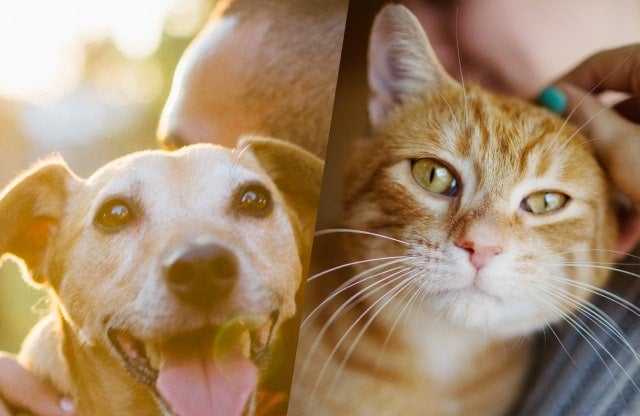
- Other Animals
- Shelters & Rescues
Finding pets for you...
Planning to adopt a pet, checklist for new adopters.
Make the adoption transition as smooth as possible.
COVID-19 Resources
Learn how shelters/rescue groups are adapting. Find out how you can help dogs and cats.
Pet Adoption FAQs
Get answer to all the you questions you haven’t thought of for your adoption.
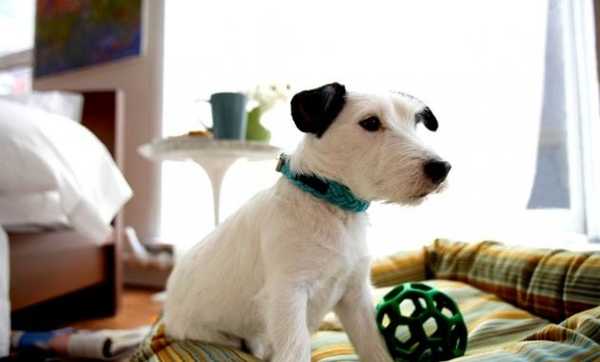
Dog Adoption Articles
Learn more about caring for your new dog

Cat Adoption Articles
Helpful insights on what to expect.

Policies on Home Visits
Small Paws Rescue’s Policies on Home Visits
Dear Small Pawsers: I wanted to let you know why Small Paws doesn’t require that a home visit be done prior to adoption, and why we don’t allow adopters to come to your homes, or meet somewhere to meet the dogs before adoption. There are several reasons for the policy regarding home visits. First of all, we are a national rescue organization that has been granted 501C3 not for profit status by the IRS. One of their rules is that we treat every person alike…that we don’t do one thing for one person, and not for another person. If we don’t have a volunteer out in the middle of Timbuktu, able to do a home visit, then we can’t do one in Chicago, where we may have several volunteers. Yes, we could adopt only to larger populated cities, and stop adopting to rural areas altogether, but many Bichons would die if we did this. Secondly, there is no liability insurance anywhere that will cover our 800 plus volunteers, going into a stranger’s home. It can be dangerous to go to the homes of people you don’t know. Thirdly, we have learned over the years that you can learn much more from speaking with the applicant’s vet’s office, and with doing several phone interviews, than you can by actually visiting an applicant’s home. I can’t even begin to tell you how many times we hear from other rescue groups, asking us to help them reclaim their recently placed dog, from adopters who had a WONDERFUL HOME VISIT, but who have proved to be less than desirable dog owners.:( This happens each and every week. People can manipulate how things look in their home for a home visit. People can’t manipulate their histories on how they have taken care of their pets in the past. That’s where we look. Past histories. Were their previous dogs altered? Are their dogs current on vaccinations and heart worm preventative? Did they bring their dogs into the vet’s office for regular wellness visits…and did the dogs appear to the vet to be well taken care of when they came in? Were there ever any suspicions of abuse? I’ve been in some pretty nice homes, with four and five car garages, where I wouldn’t have let them adopt a dead turtle. I have also been in the tiny apartment home of one of our adopters which is located in the projects, in Endicott, New York. Graffiti lines the outside walls. No one gives a better home to that Bichon, than the adopter who lives there. No one.
Would you ever have guessed that this Bichon lives in the projects in New York?

Small Paws places roughly 1000 Bichons each year. Our rate of return is well under one percent. We are doing something right! At the Bichon Bashes that we attend all over the country, we see these adopters and their Bichons! Last year, over 2000 people attended Small Paws Bashes and we got to see them again, and their Bichons. These Bichons aren’t going to bad homes. Some of these homes may not be mansions. Some of them may be spotless, and some may be not so spotless, but they all have one thing in common. THEY HAVE HISTORIES OF TAKING EXCELLENT CARE OF THEIR PREVIOUS DOGS OR THEY WOULDN’T HAVE BEEN APPROVED TO ADOPT FROM SMALL PAWS RESCUE. We hope that this explains the protocol that we have for choosing adopted homes, which works very well and finds excellent, loving homes…with people who have histories of taking great care of their dogs.
This process has worked well for us for 11 years now, with a return rate of well under 1%. There is no one in the country that does what Small Paws does, on the scale that we do it! Here at Small Paws, we focus on the safety of our volunteers, the histories that adopters have with their previous dog’s vet and grooming care, commitments made in advance to love these adopted Bichons, warts and all, and the safe and forever placement of each and every Small Paws Rescue Bichon. Sincerely, Robin Pressnall
Make a Donation for a Rescued Bichon's Medical Care
Small Paws® Rescue Inc. is 501-C3 Tax exempt charitable organization. All donations are tax deductable.

Adopting a Pet From a Rescue (And Why the Rules Sometimes Seem Wacky)
Have you ever wondered why pet rescues rules are often so weird? Here’s the reason for all the red tape and how you can navigate it.
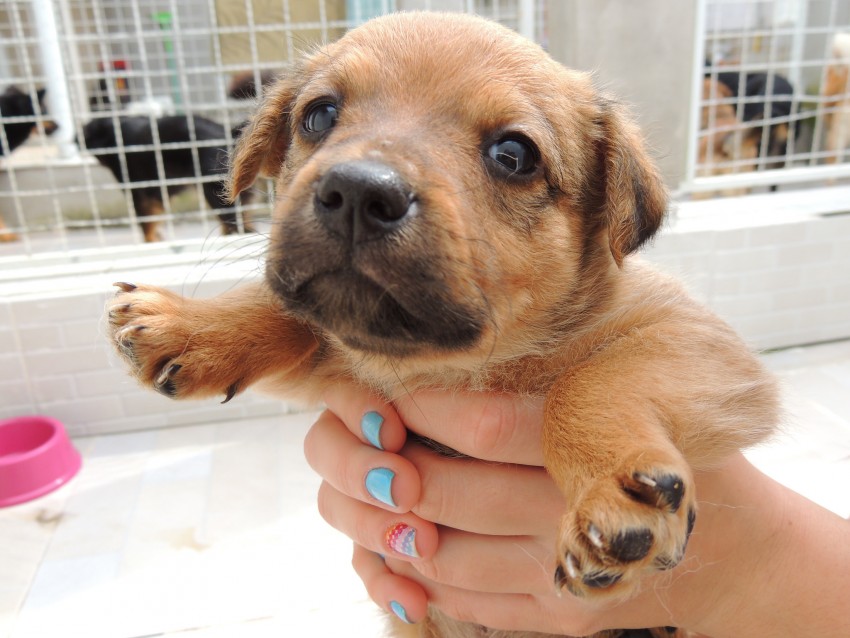
Adopting a pet from a rescue is startlingly similar to adopting a human baby from an adoption agency.
In both cases, the groups require a thorough screening process to ensure that the pet/baby is placed in a home where they will not only be cherished for the rest of their life but also receive the appropriate care and nurturing they need to thrive.
If you’ve never worked with a pet rescue, you might be annoyed by some of the hurdles you’ll have to jump over en route to adopting a pet.
But there’s one simple reason for all those hurdles: Rescues want to make sure their babies — many of whom they’ve saved from illness, abuse and death — are placed in permanent, loving homes where they will be spoiled and pampered for the rest of their lives.
Although there’s no way to determine for certain whether a potential adopter can provide the perfect home, rescues try hard — which means they do a lot of work in screening their applicants.
Here’s what you can expect from most rescues (policies and procedures will vary).
Applying to Adopt a Pet From a Rescue
An adoption application gathers the data the rescue uses as criteria for screening potential adopters.
Expect 1–2 pages of basic questions, most of which focus on your home, lifestyle and beliefs on how to properly care for a pet.
They’ll also try to match you with a pet who will thrive in your environment.
For example:
- If you live in an apartment and work long hours , a rescue will probably balk at giving you a young, active dog but might recommend an older dog or a pair of dogs who won’t mind lazing around all day, provided they have a place to potty.
- If you live in the city or the suburbs and allow your cats to roam outside , a rescue will probably reject you — it has grown increasingly dangerous to allow cats to live outdoors, and the rescue won’t want to take any chances.
- If you have infants or toddlers living with you, a rescue will not let you adopt a dog or cat who responds poorly to roughhousing.
- If you live in a house, the rescue will want to know about the security and height of your fence .
- If you plan to or have a history of performing “cosmetic” surgery on your animals — cropping ears, docking tails, declawing cats — the rescue will reject you outright, just as they will if you have intact animals (except those who are too old or ill to have surgery). If you want a declawed cat, discuss the decision with the rescue or shelter staff. Be open and honest. There may be an already-declawed cat available for adoption.
The application shouldn’t be too long.
You also shouldn’t be required to provide your annual income, information about your employer or your Social Security number.
Here’s one example of a thorough but fair online application for adopting a pet from a rescue.
Be as honest as possible. Rescues and shelters have many resources to verify all the information you provide. They aren’t looking for a reason to reject you. They’re just looking out for the animals’ well-being.

Phone Interviews for Adopting a Pet From a Rescue
The next step is a chat on the phone, which any potential adopter should have no problem doing.
The rescue will want to get to know you a little better before the adoption proceeds further.
Just be yourself — and be honest! If you make up stuff because you think it’s what the rescue wants to hear, they won’t be able to match you accurately with a pet.
Was YOUR Pet Food Recalled?
Check Now: Blue Buffalo • Science Diet • Purina • Wellness • 4health • Canine Carry Outs • Friskies • Taste of the Wild • See 200+ more brands…
CHECK RECALLS NOW!

Reference Checks for Adopting a Pet From a Rescue
Although not every rescue checks references, most ask for at least 2, usually from a friend, neighbor, co-worker or veterinarian.
Simply providing the information is often enough.
But if they call the vet clinic you wrote down as a reference, and the tech answering the phone says, “Who?” — it’s not good.
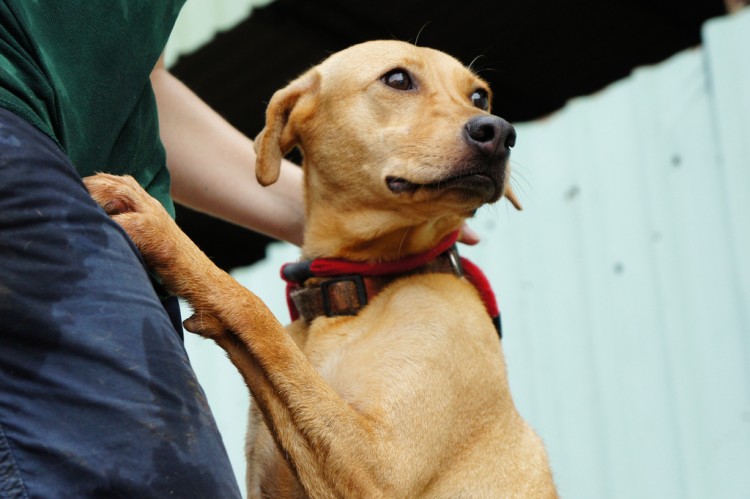
Home Visits Before You Adopt a Pet From a Rescue
The next step — the one that naysayers usually find so intrusive — is the home check.
However, it is the most important step in the screening process, so it’s usually mandatory. The exception would be if you are adopting from a remote area, in which case the rescue might request you email them photos of your home and yard.
Here’s what to expect with a home visit before you adopt a pet from a rescue:
- A good rescue won’t care if you live in a house or apartment, as long as the pet you want to adopt is suited to your lifestyle .
- Most home visits take 10–15 minutes and include a brief tour of your home and yard.
- The rescue representative won’t open your drawers or run a white-gloved finger over your baseboards.
- They’ll want to meet your other pets and the other family members to make sure the pet’s new home is safe and secure.
- The rescue isn’t there to judge your decorating style or housekeeping skills. It simply wants to make sure you are who you say you are and not a hoarder, lab, reseller or someone who has lied on their application about their home, family and lifestyle.
- The rescue probably won’t bring the pet with them for the home visit, just in case it doesn’t work out.

Meeting Your New Pet in Person
Unless you’ve already met the pet at an adoption event, you probably won’t meet them in person until the day you plan to adopt them.
The rescue should bring the pet to your home to allow you to get to know them and decide whether or not you’re ready to adopt:
- If it’s love at first sight, you can probably conclude the adoption that day.
- If you don’t think the pet is a good match, or if you need time to think it over, you can conclude the adoption another day if the animal is still available.

Adoption Contract
Every good pet rescue will require you to sign an adoption contract before you complete the adoption.
If a rescue doesn’t do this, then they aren’t careful enough with their animals, and you shouldn’t work with them.
Although contracts vary widely among organizations, you’ll probably see these required provisions:
- You must provide basic care. In addition to food, shelter and water, you must commit to providing the animal with veterinary care, exercise and, of course, love.
- You are adopting the animal for the rest of their life. If you cannot keep the animal at any point in the future, you must notify the rescue and allow them to help rehome the pet, whether it’s just signing off on a friend or family member taking in the pet or finding a new home altogether. Rescues are responsible for the health and security of their animals, even after they are adopted.
- You must keep the rescue tag on the animal. Although not every rescue requires this provision, it’s a good idea. If someone finds your pet and can’t reach you, the rescue can serve as a backup.
- You must spay or neuter the animal and complete scheduled rounds of vaccination. If your pet is too young to spay, neuter or vaccinate before the adoption, you will be required to give the rescue an additional deposit (around $100) that they will refund when you send them a copy of the medical records.
You’ll probably be asked to initial several more conditions, but these are the basics.

Adoption Fees for Pet Rescues
The source of much argument with anti-rescue people, the adoption fee is the donation you give the rescue in exchange for adopting the animal.
It is not a sale price.
Rescues are nonprofit, and I’ve yet to encounter one that wasn’t operating deeply in the red. They need every bit of funding they can get their hands on, and most of it comes from adoption fees.
Very few rescues charge adopters the same amount of money that they have spent on vetting costs. If they did, a 10-year-old dog would cost at least $500, sometimes much more, and people simply won’t pay that much for an older animal.
Unfortunately, the majority of fosters come into rescues sick, old or needing major vet care. Most rescues skew fees for these pets, charging as little as $50.
Occasionally a rescue will get puppies. It doesn’t happen often, but when it does, it’s an excellent opportunity for the rescue to make back some of the money they’ve spent vetting the needy animals.
If you see a purebred puppy, especially a highly desirable breed, like a Maltese or Yorkie , expect to pay $300–500. All those funds will go straight to paying expenses, but, sadly, probably won’t make much of a dent.
If you are working with a registered nonprofit, the adoption fee will be 100% tax-deductible.
Expect to hear from the rescue from time to time, especially the pet’s foster parents .
I love to keep in contact with the people who adopt my dogs! No matter how long they were here, my fosters were a part of my family.
I miss them when they’re gone, so anytime I receive an update or pictures, I get all warm and fuzzy inside.
Watch this delightful video about a pair of Dachshunds who were rescued:

Why Was My Pet Adoption Denied by the Rescue Group?
If the rescue rejected you, they probably had a reason.
It might be a temporary situation you need to resolve — such as building a fence or waiting for a child to get a little older — but it’s probably because of one of these reasons:
- You lied on your application . Bad move.
- Your home is unsafe. No rescue will place an animal in a home where their safety is in question. If you don’t have a secure yard, if family members always leave the door or gate open, or if you have dangerous home improvement projects going on, then don’t expect the rescue to approve you. Talk about it to see if you can remedy the problem.
- It wasn’t a good match. You might think Twinkles is the perfect kitty for you, but the rescue may think otherwise. They know the animal and what they need in term of their perfect home. If it isn’t a good match, don’t get mad. Talk with the rescue about another pet that may be better for you.
- You wanted an “outdoor dog.” Dogs are not lawn ornaments. They are social animals who deserve to be a part of your family. You don’t have to let them up on your couch, but if you’re planning on chaining up your adopted puppy in the yard, don’t expect that adoption to go through.
- You’re under 21. In addition to insurance liabilities, rescues don’t like to adopt to young people because they don’t usually know where they’ll be in 5 years. If you go to college, you won’t be able to take your pet with you. If you move to a no-pets building , you’ll need to find a new home for the animal. There are exceptions, of course: If you’re living a stable life, especially if you’re married or in a permanent relationship, and live in your own home, the rescue might bend the age rule.
- Yours is a military family. Too many pets come into rescues when their families are deployed . If your family has a history of moving around base to base, the rescue will probably reject you, simply because you won’t know the circumstances of your family’s next post. If you are living in permanent housing, the rescue should be fine with it. If it isn’t, look for another rescue.
- You’re weird. OK, this is the single biggest reason I reject applicants, even though it’s completely subjective. If an applicant argues with me or gets angry with me, that’s it. Other times, my gut tells me no, and I trust my gut. Rescues don’t tell you when you’re rejected because of your poor behavior or attitude, so if you’ve been turned down for unexplained reasons, it’s probably because you’re weird.
Remember, rescues don’t exist to supply people with pets.
Their function is to find homes for needy animals. If it isn’t yours, they’ll find another.
You always have the option of adopting from your local shelter .

A Note About “Bad” Rescues
Most animal rescues are great, but a few are miserable to work with.
If you see any of the following red flags, choose another rescue:
- No one gets back to you. Not only do rescue volunteers juggle work and family life, but also they spend a great many hours every week — sometimes every day — saving animals’ lives. This includes arranging to bail the animals out of the shelter, getting them vet care , nursing them into good health, working with behavior issues, taking them to adoption events, interviewing potential adopters and doing lots of laundry. That said, if you submit an application and don’t hear back within a week, even when you follow up, you aren’t working with a good rescue.
- The animals don’t seem healthy. Not all rescues can afford extensive veterinary care, but they do need to make sure their fosters don’t have kennel cough or a respiratory infection, both of which are common in shelter pets. Also, if the animals are dirty or look neglected, it’s a sign that they aren’t being treated well.
- The paperwork is odd. A good rescue will require you to complete an adoption application and contract. If they don’t, or if they don’t provide the shelter paperwork or spay/neuter and vaccination paperwork, something isn’t right.
- The rescue turns down qualified applicants. If you have had pets all your life, have a stable life, live in a house with a huge, safe backyard, don’t have any boisterous young children, and have at least one other pet in great health and the rescue rejects you, this kind of scenario can be a sign that the rescue is hoarding animals because they don’t think anyone is good enough to adopt them.
Another way in which you might have problems with a rescue is that the people who staff them might be extremely unpleasant.
Sadly, this is not uncommon. When people work with shelter animals year after year, they see the worst that humans can do.
Once you encounter these types of situations over and over again, it eats away at you. Many volunteers begin to dislike people categorically, especially after having to deal with grossly under-qualified adopters, many of whom make a big stink if their application is rejected for legitimate reasons.
If you run into a cranky rescue volunteer, try to be compassionate and patient. Keep in mind that the volunteer is probably exhausted.
Always remember that if you have a bad experience with a rescue, all you have to do is go to a different rescue. You’ll find hundreds listed on Petfinder .

Try a Shelter First
A question I frequently get is, “Why should I jump through all these hoops when I can go to the shelter and get any animal I please?”
First off, please go to the shelter !
Pets in rescue are no longer in danger of being euthanized — but pets in shelters are.
But keep in mind that adopting through rescues does offer a few benefits over adopting directly from the shelter:
- The pet will be healthy. Animal shelters will spay/neuter, vaccinate and usually microchip the pet before they send them home with you — but that’s it. Shelters don’t have the budget to treat sick animals. They’re often put down immediately. A rescue will make sure the animal will get any necessary veterinary care, including medication, dental cleanings or surgery. If they can afford it, they’ll pay for blood work and a urinalysis.
- You’ll know the pet’s temperament. When animals in the shelter, they are not themselves. How could they be? It’s loud, they’re scared and they don’t know what’s going to happen next. When a pet is in foster care with a rescue, the foster parents will have the chance to assess their personality and determine their needs, especially regarding children, strangers and other animals.
- You can specify the kind of pet you want. If you want a dog or cat of a particular age, personality or breed, you might not have luck at the shelter. A rescue can help you find the pet you’re looking for, even if it takes awhile.
- The pet will probably be trained. Although there’s not much time for formal training when pets are in foster care, they are usually house-trained and leash trained.
By adopting from rescues, you’re not only giving a home to a pet who truly deserves it, but also you’re opening a spot for another needy animal.
Final Thoughts on Adopting a Pet From a Rescue
Sometimes adoptions don’t work out . That’s why groups state clearly on the forms that the pets are to be returned to them.
Beware of any group that doesn’t have that clause. This is one time when a take-back is not just a good thing — it could be a life-saver.
This guide to adopting a pet from a rescue was written by Tamar Love Grande , who has fostered and adopted out many dozens of dogs over the years. Allison Gray , a former animal shelter worker, and T.J. Banks , who has been involved in cat rescue and fostering, also contributed to this article. It was last updated Nov. 20, 2018.
Don’t leave your pet’s food safety to chance.
Sign up for petful’s recall alerts today. (it’s 100% free.).

Stay informed. Protect your pets.
Meet Petful
- How We Help
Pet Food Safety
- Free Recall Alerts
- Pet Food Recalls
- Report Problems
- Vet-Approved Recipes
- Adopt a Pet
- Privacy Policy
- Cookie Policy
- Terms & Conditions
© 2024 Petful® / P51 Capital All rights reserved. Petful does not provide medical advice, diagnosis or treatment. More information.

- Application
Home-to-Home Adoptions
- Surrender a Pet
- Lost and Found Pets
- Spay/Neuter
- Vaccine Appointments
- Wellness Appointments
- Cat Behavior Help
- Dog Behavior Help
- Rabbit Behavior Help
- Behavior Helpline
- Pet Retention and Support
- Chow Wagon Pet Food Bank
- Friends for Life
- Play Yard Rentals
- Feral and Community Cats
- Games and Enrichment
- Cat Training
- Dog Training
- Rabbit Training
- Human Training
- Partnerships and Citizenship
- Family Learning
- Animal Friends Academy
- Therapets Certification Class
- Request a Therapets Visit
- Animal Friends for Veterans
- Humane Investigations
- Pet Loss Resources
- Become a Volunteer
- Current Volunteers
- Other Opportunities
- Foster a Pet
- Become a Corporate Partner
- Start Your Fundraiser
- Host a Fundraiser
- Animal Friends Advocates
- Mission and Vision
- Board of Directors
- Impact Report
- By the Numbers
- Financial Information
- Petsburgh Magazine
- In the Media
- Speak! Blog
Home » Home-to-Home Adoptions
At Animal Friends, we know that the best place for a pet is at home with a loving family. That’s why we’re pleased to offer an alternative to surrendering a pet with our Home-to-Home Adoption program. This program helps families who are facing the difficult decision to find a new home for their beloved pets by allowing them to take an active role in the adoption process.
And, by keeping pets at home while they wait to find new families, we’re able to help more animals in our community even when our kennels are full.
Adoptable Pets
The animals listed below are being made available for adoption by their current families. If you’re interested in meeting someone, please use the contact information listed in their profile. The owner reserves the right to request a separate application be completed which they will provide. They may also ask for vet references, home visits or other information. This is to ensure that the pet is matched in the best way possible.
Animal Friends cannot accept responsibility for the adoptions conducted through contacts made through our Home-to-Home Adoption program.
Place Your Pet
To place your pet up for adoption through our Home-to-Home Adoption program, complete this form and send it to our Admissions team. In order to be placed on our website, you must provide us with a photo and biography of your pet by emailing it to [email protected] .
“Such a clean, organized and loving environment! Beautiful campus and a very well run organization. ”
“i volunteer here and the amount of time and care they take with the animals is above and beyond.”, “very caring and friendly staff the dogs and i love it here”, “highly recommend bunny yoga smoothly run event, super friendly and fun staff, great yoga class, annnnd bunnies”, “this is the most awesome shelter i've ever dealt with. the staff are so caring and kind. the educational programs are amazing”, “there are so many amazing things about animal friends we are truly blessed with them. ”.
Sari’ah K.
“I had dropped off my cat to be spayed, very friendly staff, I am confident they will take excellent care of her.”
“nebby is loving his new home with all his toys thanks animal friends for giving him a second chance”.
Michelle F.
“Friendly, professional, affordable, compassionate!”
“animal friends is the best i got my sweet girl aspen there and the staff was so friendly and helpful.”, “wonderful place to volunteer as well as help lower the stray pet population.”, “all of the employees and volunteers are so dedicated to the welfare of the animals. ”, “excellent dog training classes fun for doggies of all ages”.
Roseanne C.
“I start my puppy training class today and my cat training class tomorrow at Animal Friends! I’m so excited! ”
“animal friends is the most sophisticated place to adopt a new pet. if ever i plan to expand my furry family, i will go to animal friends to find him.”, “great staff and volunteers”.
Victoria D.
“We adopted Nico after the meet and greet went well with the family! Everyone here was so helpful and kind!”
“very friendly staff affordable prices and very well maintained facility”, “they were so helpful in the adoption process and made sure i knew all the details of the dog i adopted”, “thank you to everyone who helped us to find and adopt loving jack ... can't recommend you guys more.”, “love the staff wonderful facility. ”, “friendly staff reasonable prices”.
Stephanie M.
“We adopted a Ross dog from Animal Friends, and they gave us with our dog’s history and provided behavioral support after adoption!”
“i tell everyone that i know to check animal friends if they are looking for a pet.”, “i'm glad that we got our kittens from a place that loves animals as much as we do. thank you”, “awesome staff – they take great care of the animals and go above and beyond for veterans.”, “we got our baby girl maya there over a year ago and had a wonderful experience they were friendly and helped us adopt our fun, vocal, sassy beautiful girl as a member of our family.”, “ absolutely wonderful place. we frequently return for classes and grooming”, “great, clean facility and friendly staff ”.
Christie B.
Meet Our Adoptable Pets
Cats available for adoption
Dogs available for adoption
Our Adoption Process

Meet your new love
Meet your new love either at our Pet Adoption Center or online and inquire about the animal you are interested in either using the “ask about me” link online or by speaking with a volunteer at the adoption center.

Fill out an application
After inquiring about the animal and determining you are a good match for each other, ask for an adoption application. Our foster parents generally handle the adoptions of the animals they foster, and your application will be routed to them.

Discuss with the foster parent
The foster parent will review your application and discuss it with you, usually within 24 hours. If your application is approved and you haven’t met the animal, the foster parent will schedule a meeting and may do a home visit if you are applying for a dog.

Live happily ever after
We hope that every adoption results in happily ever after, but if for any reason you are unable to keep your pet, we will always be there for them and will find them a new forever home.
FAQs About Adopting
What is the adoption process.
See our explanation above .
How much does it cost?
Cats and kittens are $50. Puppies and dogs are $175-$250.
Will the animal have all his or her vet work done already?
All animals are spayed or neutered before adoption. They will also have the following completed:
- FIV/FeLV combo test (for cats) or heartworm/parvo test (for dogs)
- Rabies vaccine (if old enough)
- Distemper combo vaccine and booster
- Bordetello, leptosporosis, and canine influenza vaccines (for dogs)
- Flea treatment and preventative
- Other vet care as needed
How long does the adoption process take?
Foster parents should respond to inquiries within 24 hours. The length of time for an adoption depends on schedules and the availbility of the foster parent and adopter.
Where is your adoption application?
We do not make our adoption application available on our website generally. You can request an application from the animal’s foster parent or at our Pet Adoption Center.
How old do you have to be to adopt?
You must be at least age 18 to adopt from us. This is primarily because you need to be of legal age to sign a contract.
Can I do a meet and greet with my pet to make sure they get along?
We require a meet and greet for all dog adoptions. Cats typically take more time to accept a new housemate so we advise keeping the new cat isolated in a room until the appropriate slow introduction can be done.
Will I need to have a home visit?
Home visits are usually required for dog adoptions.
Who decides if I'm a good match for an animal I'm interested in?
The foster parent who has cared for the animal is responsible for determining if an applicant is a suitable home.
I saw a shelter pleading for help for a specific animal. Can I foster the animal through you?
This is handled on a case-by-case basis. Our Foster Coordinator would have to approve your application to foster. Find out more about fostering through us here .
Do you do out-of-state adoptions?
Yes, in the right circumstances. We certainly do not “ship” animals, but we are not opposed to adopting to someone who lives outside Michigan if it’s the right fit and the transportation for the animal is reasonable. We have done several long-distance adoptions, in fact!
What Our Adopters Say

We adopted Ruby from STH almost 5 years ago, and it was one of the best days ever. Our kids still talk about going to STH to adopt Ruby. From the start we decided we couldn’t stand the thought of being apart from Ruby so she always travels with us when we go camping or on vacation, she is truly a beloved member of our family. One of the best things about adopting Ruby from STH is how invested Shelley is in each of these animals, she remembers them and wants to know how they are doing. It is nice to see that dedication and caring for each animal, even years later. Thank you so much for giving us our Ruby!

I can’t imagine home without Oreo.
She came into our lives during a difficult time with the illness and passing of a loved one. We didn’t know it at the time, but she was exactly what we all needed. She put smiles on our faces, and put a bounce in the resident seniors’ steps. Five and a half years later, she’s still the ultimate lap cat, still an incredible dot junkie, still making us smile and still making our home brighter.

Three years ago we adopted Max from Shelter to Home. Our experience with STH was amazing, and our love for Max is beyond compare. As my 8 year old daughter says, “Max made our little family complete.” We are forever grateful to STH for bringing Max into our home.

To date, I have adopted 4 seniors from STH and they have all been wonderful, yet very different, but equally loved. Shelter to Home is such a great rescue to deal with and have made each adoption an easy process.
People always ask why do I get the “old ones?” Well, I am a big believer in karma, and we are all going to be old someday and need to be cared for. I cannot express how full my heart gets when I bring the seniors into my home to live out their remaining years and see them laying in the sunshine, watching the birds through the window or curled up in bed on a cold winter day. Those small moments make having seniors by far the best experience ever, knowing they got all the love and comfort they deserve in their golden years.
I highly recommend visiting the Cat House in Wyandotte to meet all the cats and see their own unique personalities while they roam around. Shelter to Home and its volunteers are beyond amazing and a pleasure to work with and support!

What our rescue dog, Sammy, means to us…..
Millions of people adopt a rescue pet every year. There is often a common misconception is that all shelter dogs are broken, abused, or problematic. While some have been through traumatic situations or need extra medical or behavioral care, shelter dogs are too often end up in a shelter due to no fault of their own. Thanks to the wonderful caring work of Shelter to Home (STH), our Sammy (Samuel Adams) was rescued and got the needed medical attention to fix a broken leg. We followed his story on Facebook as he healed and looked forward to updates as each day passed. One cold January Saturday morning, we headed to a STH Pet Smart adoption event and got to see Sammy face to face. There is no feeling like the one you get as you lock eyes with a dog and know it’s “the one,” regardless of age or breed. It was love, love, love. Sammy joined our family that day and headed home with us to meet his brother and two sister dogs.
Dogs are not our whole life, but they make our lives whole…. whether it is the thousands of kisses they give, or a partner to stroll around the yard with or just someone to cuddle with on the couch; they simply provide unconditional love. Though our home was already full with three dogs of our own, there is always room for a big hearted, fun loving dog who just wants a family of their own to love. He fills our days with joy; from his little tail always wagging, to his wanting to get his ears and belly rubbed and to his endless games of fetch. Sammy is a big happy boy who truly loves his family; but we love him even more!
The day you bring home a new dog is one of the most memorable days ever. Thanks to Shelter to Home for giving our Sammy a chance to have a happy healthy life. We simply love our boy to pieces.
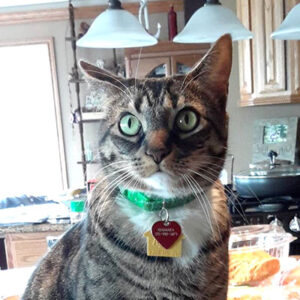

- Service Area
- News & Events
- Newsletter Library
- Adoption Process
- Adoption Application
- Available Dogs
- Happy Endings
- Foster To Adopt Dogs
- Long Term Foster Dogs
- Membership/Volunteering
Save a Golden’s Life
Goldheart (gh) adoption process.
We are a small all-volunteer rescue group that takes in about 40 goldens and golden mixes per year and approves around 150 new applications to adopt annually. Absent any major changes in a home, an application approval is generally good for three years from the date of issuance.
GoldHeart routinely operates in parts of Maryland, south-central Pennsylvania, and Delaware. Please visit GH Service Area for a complete listing of the counties we serve. If you live outside these areas, please DO NOT APPLY. You may find another Golden Retriever rescue online; and here is one site that lists rescues by state. https://www.absolutelygolden.com/rescue-clubs-by-state/
As discussed in the video, GH strives to place all dogs we rescue in their forever homes . Since they have been through at least one prior home, we want their next permanent home to be their forever home , and our success rate proves that our adoption process works. This process consists of six steps.
- 1 Application – Complete and submit an Adoption Application with a $30 processing fee (see link above under More Information).
- 2 Reference Checks – GH volunteers contact your veterinarian and personal references.
- 3 Home Visit – A GH volunteer and one of their dogs will visit your home to conduct an interview of the family and determine if the home is a good match for the age and activity level requested in the adoption application. The GH volunteer then submits a home visit report to GH’s Adoption Application Coordinator.
- 4 Approval – The GH Adoption Application Coordinator determines whether to approve the applicant and then sends a written notification of GH’s decision to the applicant, along with details covering the applicable next steps.
- 5 Finding a Golden – If approved, watch the website to identify Available Dogs that will fit into your home and lifestyle. When a dog is ready for adoption, you will see a Looking for a Forever Home post. You may then express your interest, using the email link in the post, and the foster family will be alerted and receive a copy of your approval file.
- 6 Adopting a Golden – If you are selected, before you take your dog home, together with the GH foster home volunteer, you will complete adoption paperwork and pay the donation fee and any refundable fees (e.g., for training). Our job does not end when the paperwork is done. Your dog’s foster parents and other GoldHeart representatives will continue to be available to you. We want to help you make the transition of your new fur kid as seamless as possible.
The fee to adopt a dog from GH follows below. All GH dogs are spayed or neutered, up-to-date on vaccinations, micro-chipped, and on heartworm and flea preventative medications. All dogs under 12 months of age are adopted under a GoldHeart Puppy Contract.
- $850 – under 12 months
- $500 – 1 to 4 years
- $400 – 5 to 7 years
- $300 - 8 to 10 years
- $150 - over 10 years
Note: Refundable deposits of $150 for training may be required during the adoption process.
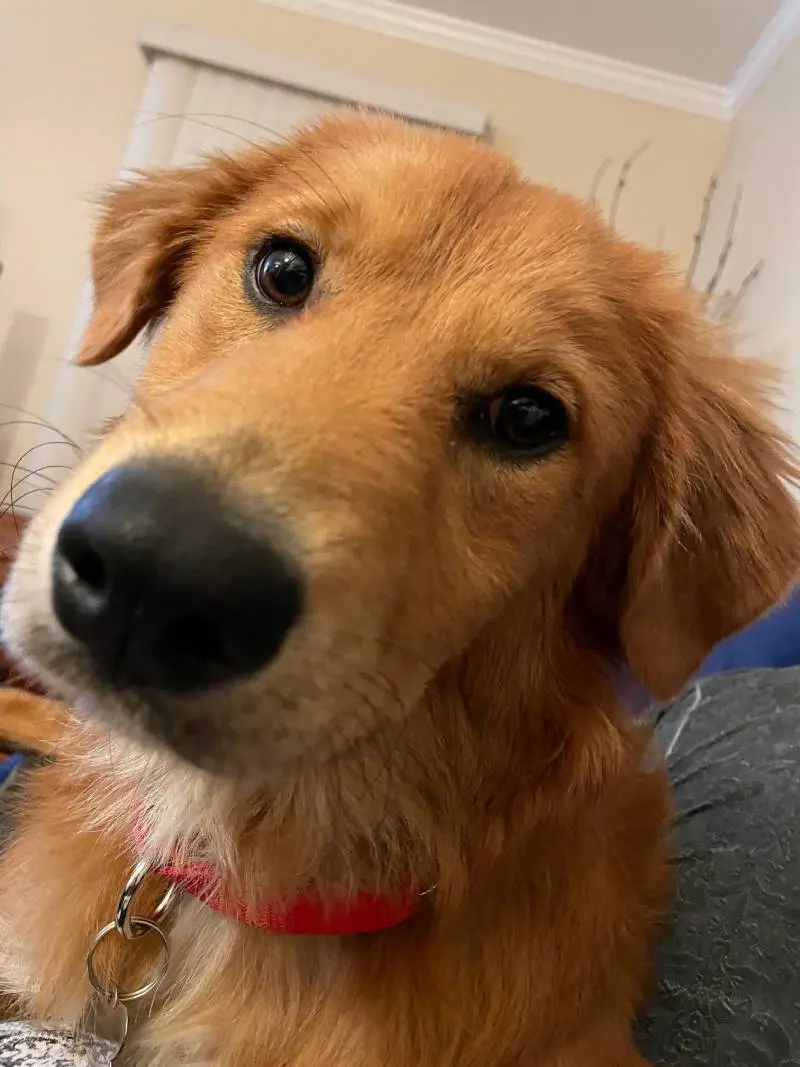
Home To Home uses Google Translate to automatically translate this website.
Some translations may not be perfect and some elements such as buttons may not be able to hold all translated text.
Sign-Up for our Newsletter
Looking for a new friend? Use the search features to set your preferred animal type, gender, age, and location.
- Search Please fill out this field.
- Manage Your Subscription
- Give a Gift Subscription
- Newsletters
- Sweepstakes
Rescue Dog with a Huge Smile and 'Full Body Wags' Wins Hearts, But Is Still Looking for a Home (Exclusive)
Bitsy the pit bull mix is at the City of Arlington, Texas Animal Services searching for a forever home filled with love and attention
:max_bytes(150000):strip_icc():format(webp)/K.Bender1513-eb9750a34aeb48369ac0dbfb4b65b3b9.jpg)
Michelle Patchett | City of Arlington, Texas Animal Services
- Bitsy the pit bull mix arrived as a stray dog at the City of Arlington, Texas Animal Services on April 22
- The friendly dog went up for adoption on April 25, and the shelter shared a smiling photo of the canine in a pet adoption post on Facebook on April 30
- Despite the popularity of Bitsy's photo, the dog is still available for adoption
Bitsy the rescue dog has a winning smile but it hasn't earned her a home yet.
The pit bull mix arrived at the City of Arlington, Texas Animal Services on April 22 after an eventful day as a stray.
"We actually received multiple calls from concerned citizens about her because she was running loose as a stray. They said she was a happy and friendly dog, but it was like she was just enjoying a random stroll through a neighborhood and didn't want to stop," a spokesperson from the City of Arlington, Texas Animal Services, tells PEOPLE.
Officer Alex Pollard eventually found the dog after Bitsy completed her fun run around the Arlington neighborhood and ended up at the house of one of the concerned citizens who called about the canine.
"Officer Alex Pollard said when she arrived to the address, Bitsy was laying on her back, feet up in the air like she had just had the best day, but was worn out from her fun," the spokesperson shares, adding, "Officer Pollard said she was immediately one of those dogs that she knows she will remember forever, and not because of her now popular window picture, but because she was so happy and full of life."
Jen Johnson/Arlington Animal Services
According to the City of Arlington, Texas Animal Services, many stray dogs arrive at the shelter "scared and overwhelmed," but not Bitsy.
"Bitsy immediately made her presence known. She is a happy, rambunctious, energetic dog. She is very attached to being with people and makes the funniest dinosaur noises when she wants more attention from you," the shelter says.
Bisty has so much positive energy that the shelter employees say the dog "has full body wags" whenever she meets someone new.
Another thing that is impossible to ignore about Bitsy, who the shelter estimates is 3 or 4, is her smile.
"Bitsy's smile was noticed instantly! She is literally always happy, but especially when she sees or is with people!" the shelter spokesperson says.
After Bitsy's 72-hour stray hold ended and no owner came forward to claim the friendly dog, the pup was prepared for adoption.
"She was made available for adoption on April 25, but as a VIP Adoptable Pet because we believe she may be hard of hearing or even deaf due to behavior observations made while caring for her. When pets are made VIP at Arlington Animal Services, we reduce their adoption fee and feature them in hopes of finding their forever homes quickly," the City of Arlington, Texas Animal Services spokesperson explains.
On April 30, the shelter got a chance to showcase Bitsy's engaging smile. The City of Arlington, Texas Animal Services moved the dog to one of its limited number of kennels at the front of the shelter in the facility's "adoption mall." Here, Bitsy has a big window where she can look at potential pet parents visiting the shelter.
The City of Arlington, Texas Animal Services spokesperson says that "within seconds" of Bitsy moving into her new kennel, she popped up to look out the window with a massive smile on her face.
"She was so happy! It honestly didn't surprise us, but it is like she knew this was her chance at a family! She loves looking out the window and seeing staff or visitors in the shelter and is even happier than she was before," the shelter spokesperson shared.
A shelter employee snapped a photo of Bitsy smiling out her window and shared it on Facebook with the caption, "The face you make when you make your adoption mall debut."
The post earned over 2,400 shares on Facebook but has not generated adoption interest for Bitsy.
"She is sadly still waiting, and we haven't really had anyone reach out about her, despite the popular window photo and how adorable she is," the City of Arlington, Texas Animal Services spokesperson shares, adding the shelter is still happy the dog received an "outpouring of love" online.
The shelter says Bitsy would do best with a responsible pet owner "looking for a fun and energetic dog to love."
"Bitsy wants and needs love, time, and attention," according to the shelter. She also needs "someone willing to work with the possibility of her being deaf. She is a smart dog who absolutely loves to please people."
The City of Arlington, Texas Animal Services hopes Bitsy finds a loving home soon, where she can share her smile with a family, and that the adorable dog makes more animal lovers consider adoption.
Never miss a story — sign up for PEOPLE's free daily newsletter to stay up-to-date on the best of what PEOPLE has to offer, from celebrity news to compelling human interest stories.
"We are confident a new family will come for Bitsy, but we hope this brings awareness to homeless shelter dogs waiting in the windows everywhere and that someone will consider opening their hearts and homes to a shelter dog in need," the spokesperson says.
To learn more about Bitsy and other adoptable pets from the City of Arlington, Texas Animal Services, visit the shelter's website .
Related Articles
Meet Bella, the extremely rare five-legged puppy looking for a home in the Milwaukee area
Bella will be available for adoption at the wisconsin humane society kenosha campus on friday, april 26..

In most ways, Bella, a 6-month-old dog recently surrendered to the Wisconsin Humane Society , is just your average puppy.
She loves canned chicken, going on walks and running around outside. However, there is one thing that makes Bella very, very unique ― her rear right leg.
X-rays show that Bella's leg has two femurs, two tibias, two fibulas and nine toes. A typical canine leg has one femur, tibia and fibula, along with four or five toes. But, Bella has an ultra-rare congenital condition known as dimelia.
"Dimelia is basically a mirror-image bone structure," WHS vice president of marketing and communications Angela Speed explained. The condition is characterized by duplication of bones. In Bella's case, the structures of her right leg are duplicated and fused; she essentially has two legs in one.
Due to the condition, Bella's unique leg is abnormally wide, and her visible nine toes give her paw a flipper-like appearance. However, she is able to bear weight on her leg and uses it to walk, run and play. Although she navigates the world with a limp, WHS does not believe Bella's condition currently causes her any pain, Speed said.
"It's a little hard to predict what her journey will be like medically because so few veterinarians have ever seen this condition or treated it," she said. "But, right now, she's happy, and she's getting around great."
Veterinary experts only know of one other case of dimelia in dogs
When Bella arrived recently at the WHS Kenosha Campus, the humane society's team of over 10 veterinarians was "floored" after reviewing the puppy's X-rays, Speed said. "It looks almost like it was generated in Photoshop."
Bella's case is the first instance of canine dimelia documented at WHS in the organization's 145 year history. The condition is more often seen in humans and cattle but virtually unheard of in dogs. In fact, in their research, WHS's experts could only find one other case, a Cocker Spaniel in 2006. And this dog only had dimelia in its paw; Bella's entire leg is affected.
"There may be other cases that we're not aware of, but it is exceptionally rare," Speed said. "She's like a unicorn of a dog. She's also beautiful and playful and wonderful."
The humane society did consult with a specialist to see if amputation or surgery would be advisable in Bella's case.
"Because she gets around just fine, she uses that leg when she runs and plays, and the risks of a surgery like that, we are not pursuing amputation," Speed said.
Bella will be available for adoption in Kenosha on Friday
Despite her one-of-a-kind leg, Bella is looking for the same thing as the dozens of other dogs at WHS ― a forever home.
She will be available for adoption, beginning at 1 p.m. on Friday, April 26 at the WHS Kenosha Campus .
"It would be really important for her adoptive family to establish a relationship with a veterinarian to be sure she remains pain-free," Speed said. It's also crucial that Bella gets regular exercise to prevent extra weight from worsening her condition. Speed suggested that the puppy could benefit from swimming.
Adoptions at WHS are first-come, first-served, as long as it's a good fit. Potential adopters can fill out an adopter profile in advance, although it is not an application-based process; the information is kept on file to expedite adoptions on-site. Anyone interested in adopting should visit www.wihumane.org/adopt to view all available animals and learn more about the adoption process.
WHS hopes Bella's story brings attention to other dogs up for adoption
Bella is one of about 100 dogs and puppies currently available for adoption at WHS, Speed said.
"Her story is just a reminder of the amazing dogs and puppies available for adoption at our shelters. With every adoption, you're opening up another kennel for another dog in need."
Over the past few months, the humane society has experienced a "really high influx" of dogs, Speed continued. Much of this is due to economic reasons ― people struggling to keep their dogs due to lack of housing or access to vet care.
You can view all of WHS's available animals at www.wihumane.org/adopt . All dog and puppy adoption fees are 50% off until Tuesday, April 30.

- Weather
Search location by ZIP code
Free adoptions help make room at a crowded shelby humane society.
- Copy Link Copy {copyShortcut} to copy Link copied!

GET LOCAL BREAKING NEWS ALERTS
The latest breaking updates, delivered straight to your email inbox.
Tuesday was national “Adopt a Shelter Pet” day, and to celebrate, some shelters offered special adoption deals. Shelby Humane Society was one of those. About 20 dogs and cats left there with their forever families.
There were people in and out all day — about three times more than a typical day. Many were attracted by the offer of free adoptions Tuesday.
There are more than 150 dogs, puppies, cats and kittens at Shelby Humane Society, so officials are hopeful a great adoption deal with help make some room in the kennels.
“We're (so) crowded that difficult decisions are having to be made. And we never like that to happen. But sometimes, it does have to happen. That is the nature of being in the shelter business," volunteer Shondra Whitt said. Susie Hiser did her part. She adopted this sweet pup she's already named Rosalie.
“We have been thinking about it at least for a month. We have a dog that died and she was 12 and her name was Rosie. And then we've been we've been thinking about it, talking about it," Hiser said.
Rosalie was free and came with all her vaccinations, as well as microchipping and spaying.
But if you just can't commit, you can always "borrow" a pet for up to seven days with no cost or obligation to adopt.
“You can even come for the day to take one of our dogs on a hike. You can go to Oak Mountain, take them out for the day. We've got a whole backpack ready for you to have water, bowls and treats and everything ready for you to go and have a fun day with one of our dogs.” Rosalie doesn't have to worry; she now has her human for life.
“I think she's going to be a good dog," Hiser said.
The Greater Birmingham Humane Society will hold its “Clear the Shelters” event May 1-15. Adoption fees will be $25 during that time. You can learn more about the program here .
Epidemic of dogs dumped in Everglades hits home for Treasure Coast woman

In salty humidity thick as stew, Gloria Cabal and Hector Vega trudged through the mud and crawled on all fours through wet, mucky mangrove and cocoplum thickets in the dense Everglades. Were the fresh pawprints they found in the damp soil left by bobcats, panthers, coyotes — or the elusive animal they were tracking?
The volunteer dog rescuers hoped they were on the trail of an abandoned pit bull mother, which bikers had reported seeing with her two puppies in the Redlands area of the 1.5 million acre South Florida swamp. The rescuers had set up cameras in the area and, sure enough, saw the trio running around.
“We’re in the middle of nowhere," said Vega's wife, Paolo Jordan, a Redlands resident and third rescuer that TCPalm accompanied on the hunt that day in March. “You can dump someone here and no one would know.”
There is an "epidemic" of people dumping unwanted dogs and cats in the Everglades , Jordan said, estimating she gets about a dozen reports of strays a day . At the same time, there's a "crisis for capacity" at shelters, said Everglades Angels Dog Rescue Vice President Denise Guevara.
The Pompano Beach nonprofit, and others like it, need help from more people like Treasure Coast resident Tara Goins, who adopted a dog and donates money.
“I don’t even want to know what’s in the bank,” Guevara said. “If you're not adopting our dogs, there's just so many we can take in. Last year ... our hands were tied. There was very limited space and funds.”
Abandoned dogs of Everglades
Everglades Angels, one of at least seven such nonprofits, has saved 860 dogs and adopted 795 in 10 years.
Cabal and Jordan, who work with several different nonprofits, could only speculate on why people dump pets in the Everglades. Rent and other living expenses increase too much to afford a pet, people become homeless, so-called "bully breeds" become unmanageable, and people who got pets during COVID isolation no longer have time for them. Shelters are full and veterinarians won’t euthanize healthy dogs, so there are few good options.
“What are you supposed to do?” Jordan empathized.
“Not dump them,” Cabal said. At least let them loose in Miami, where they can be found more easily, she added. The problem with that is the Miami-Dade County Animal Services no-kill shelter is also overcrowded.
"We can comfortably house about 350 dogs, but today we are housing 650 dogs," Director Annette Jose said in March. "Dogs are staying in the shelter for too many days, weeks and months — some over a year. Their quality of life diminishes in the shelter. ... Please adopt from your local shelter instead of buying a dog from a breeder."She also recommends people tag, chip and spay/neuter their pets, and prevent them from getting loose.
Pit bull mother and puppies
Back on the hunt for the pit bull mother, the rescuers left food and water, then returned to grill pork and tripe, in hopes the smell would lure her out of hiding.
“We’re gonna be here all night,” Vega said. “That’s what we gotta do, baby,” Jordan replied.
The next day, they finally found her — scared, scraped and with a swollen face and jaws, but safe. They named the jungle survivor Jana, after the female version of Tarzan. They previously had found one of her pups and named her Jenny. Sadly, they had also found the other pup's dead body lying nearby, decaying and drawing flies.
They took Jana and Jenny to the hospital, then the Guardians of Florida Animal Rescue in Fort Myers to be adopted.
“As much as we try, there are endless stories,” Jordan said.
Rescuing dogs in the Everglades
Rescuers find sick, injured and starving dogs with oozing sores, broken bones and protruding ribs. They're plagued by fleas, mosquitos and diseases such as heartworms. Their lives are threatened by bobcats, panthers, coyotes, alligators, crocodiles and invasive Burmese pythons — not to mention vehicles.
Rescuers risk their own safety as well as their mental, emotional and financial well-being. Jordan said she spends hundreds of dollars a week on rescue efforts, and recently went to the emergency room three times in two weeks for a bug bite infection. Her mother asked if she’d die for the dogs.
"Yes," she replied. "I'll die doing what I like. We are the dogs' only chance."
Everglades Angels spends $2,777 on the monthly mortgage for its Oakland Park shelter. Donations, grants, fundraisers and sales from its Treasure 4 Tails thrift shop in Deerfield Beach help pay expenses, including food, medicine and veterinarians, President Beverley Smith said.
The rescuers get to know and love each dog: the ones that bark and bite; the crippled ones; the playful ones that chase kongs outside. In a decade, the no-kill shelter has euthanized fewer than five dogs with cancer, Guevara said. The overcrowded shelter had to turn dogs away last year as it faced a record-low adoption rate of only 20 dogs.
If Jordan can’t find an available hospital or shelter space, she takes dogs home, quarantining them in the garage she and her husband converted into an air-conditioned kennel.
“There are some days where I come home and break down and cry, but I have to wipe it off and keep saving dogs the next day,” Jordan said. “If we don’t do it, who will?”
Treasure Coast dog adoption
Tara Goins was 17 when she moved out of her parents' house in New Jersey and began fostering cats and later dogs. Now she's 42 and living in Port St. Lucie with her wife, Lauren; 5-year-old daughter, Callie; and their cat, Eli.
The family was searching for a dog to adopt, one of a certain size that would get along Eli. After finding Katy on the Everglades Angels website, they traveled to the Oakland Park shelter to meet the terrier.
“We squatted down on her level and she just came right up to us and seemed like she knew us for a long time,” Goins said. “We just knew that she was meant for us.”
Katy was skittish when she was found with a collar taut around her neck and scars on her neck and knees. For six months, Katy was terrified of the car, cowering and wobbling as Goins tried to put her in. Katy eventually acclimated to running errands around town with Goins.
Now Katy happily hangs her head out the window, ears flapping in the wind, and howling like her namesake, Katy Perry. She even guards Callie when strangers approach the family's front door.
“We couldn’t be more happy with her,” Goins said.
Animal rescue nonprofits
You can volunteer, make donations, and foster or adopt an animal through any of these nonprofits:
- Everglades Animal Coalition
- Everglades Golden Retriever Rescue
- Paw Patrol Animal Rescue
- Paws 2 Care Coalition
- Guardians of Florida Animal Rescue
- Cold Noses Foundation
- Pegasus Foundation
Katie Delk is an environmental reporter for TCPalm. Contact her at [email protected]. Check for updates at @katie_delk .
He was found alone at a West Palm Beach fire station. Now this dog needs a loving home
This week's adoptable pet of the week was found by rescuers in december. here's more about his amazing story of resiliency..

A playful, young dog was rescued near a fire station in West Palm Beach in December. He had some health issues that needed a veterinarian's attention, and his rescuers desperately wanted to know his story. Now, that same pup is ready for his forever home.
Welcome to The Palm Beach Post's Pet of the Week, a series where we feature animals up for adoption in Palm Beach County in hopes of finding them a home.
This week's pet is Crixus (pronounced KRIK·suhs) He's a spirited dog whose name comes from a Gallic gladiator and warrior who died in 72 B.C. Despite the fact that his name means "the one with curly hair," Crixus has a beautifully sleek black and white coat.
Crixus has been in the shelter since Dec. 1.
After he was found at the fire station, Crixus was shy and unsure of those who were trying to help him. But with careful attention and love from volunteers, he's come out of his shell and started to trust people again — he captures the beautifully resilient spirit of animals when they're treated kindly by their human companions.
Here's what to know about our pet of the week, including what Animal Care and Control staffers say about his personality:
Dog for adoption: Crixus
- Age: 3 years old
- Weight: 49 pounds
- Sex: Male, neutered
- Animal ID: A2159845
About him: Initially shy and unsure, Crixus has blossomed into a happy and outgoing boy, as witnessed by Animal Control's volunteers. He is ready to bring joy and companionship into a new family's life! If you're looking for a loving and resilient companion, consider opening your heart to Crixus. His wagging tail and playful demeanor promise to bring happiness and warmth to your home.
Health information : Crixus had some health issues when he was rescued, including a red and pink nose and thinning fur on his ears. He tested negative for heartworm, received his necessary vaccines and underwent neutering. His adopters will receive a crate, a plush dog bed, a collar, a leash, a big bag of food and a prescription for three months of preventatives when they take him home.
More information: Crixus is good with dogs and has a medium energy level, according to his online profile on the animal care and control website.
How to adopt a cat or dog in Palm Beach County
You can start the adoption process in person or online.
To begin in person, visit Animal Care and Control during normal business hours at 7100 Belvedere Road near West Palm Beach to fill out an application and meet the pets there.
To begin the process online:
- Use the pet's animal ID number (like the one listed above) to search them on Animal Control's online database.
- Click on the "Ready to Adopt? Click Here" link to the right of the pet's photo.
- Fill out the two-page downloadable adoption application and email it to Animal Control at [email protected] .
- Once Animal Control has reviewed your application, a team member will contact you to confirm that you have been approved to adopt. Submittal of an online application does not guarantee the pet's availability.
Adoption fees: Adoption fees for certain dogs are just $5 for the entire month of May. Adoption fees are usually $60 for adult dogs, $75 for puppies and $50 for cats and kittens. Palm Beach County residents who are 55 years and older are offered a discounted adoption fee.
Note: All animals adopted from Animal Control will be spayed if female or neutered if male. They will be up-to-date on vaccinations, protected against fleas and ticks and microchipped.
About fostering: If you are not ready for a long-term commitment, you may want to consider offering foster care to a pet. This is a great way to get the feel for becoming a pet parent, and it allows you and your new prospective pet to get to know each other. You can find more information about fostering on Animal Control's website.
Have you adopted one of our pets of the week?
So far, fourof our pets of the week have been adopted!
We'd like to track our impact throughout the year, and potentially feature adoptive families in a "where are they now?"-style story. If you've adopted a pet featured in this series, tell us about it here: https://forms.gle/nN9w7cmCQRJmVcus6
We won't use any of your information without contacting you first.
Katherine Kokal is a journalist covering education at The Palm Beach Post. She has a dog, Cooper, who is 8 years old, and a kitten, Benny, who turns 1 year old on Thursday! You can reach Katherine at [email protected] . Help support our work: Subscribe today!
Detroit animal shelter looking to get dogs adopted ahead of move

If you're looking for a new furry friend to join your family, Detroit volunteers have plenty of dogs waiting for their forever home.
Friends of Detroit Animal Care and Control are looking to get dogs adopted ahead of the Detroit Animal Care and Control shelter's upcoming move.
"We would love to place all the adoptable animals in loving homes or with reputable transfer partners who will help them on their next step to finding that amazing home," said Rachael Prenkert, president of Friends of Detroit Animal Care and Control. "If you’ve been thinking about getting a dog, or have room in your life to foster one, now’s the time."
The shelter has over 45 dogs up for adoption. All dogs are spayed and neutered, microchipped, and fully vaccinated. To adopt a dog, you must be at least 18 years old, have a valid ID, and apply and complete an adoption interview process.
The shelter will soon move to 1431 East Ferry St. in Detroit, said Detroit Media Relations Director John Roach. A date for the new shelter's opening remains unconfirmed.
Volunteers will host a variety of events in May to promote their adoption efforts.
There will be the Bissell Pet Foundation empty the shelters free adoption event Wednesday through May 15, with Cathy Bissell sponsoring adoption fees.
The furry Thursday late-night adoption event will be held Thursday at the shelter, with the shelter open until 8 p.m.
There will be an adopt-a-dog event at the Detroit Public Library on May 19 from noon to 3 p.m. on the lawn of the library's Main Branch. The first 50 attendees will get a free digital pet keychain game and the first six to adopt or foster a dog will get a free luxury dog bed.
Along with adopting a dog, you will receive a goodie bag of toys, treats, food, a month's worth of flea, tick, and heartworm preventative, and more. Fostering a dog is free, though the shelter recommends a $100 fee for adoption.
The current Detroit Animal Care and Control shelter is located at 7401 Chrysler Drive in Detroit and is open from 10:30 a.m. to 3 p.m. daily.
Over 100 dogs looking for forever homes at National Mill Dog Rescue adoption event
COLORADO SPRINGS, Colo. (KKTV) - Over 100 dogs are searching for their forever homes at the National Mill Dog Rescue adoption event on Sunday.
Along with adoptions, many activities will be taking place at the rescue from 12 p.m. to 4 p.m.
“We will be doing everything from interviewing people that may be interested in adopting, giving tours to people that want to come out, see our facility, just spend some time with some really cute dogs,” Joni Williams, the volunteer and events coordinator at National Mill Dog Rescue, said. “We’ll have vendors, a food truck, just a lot of general information about rescue and about our mission.”
The dogs were eager and excited to get some snuggles from our KKTV crew that was at the rescue this early morning.
“Some of these dogs, you know, they’ve lived in cages their whole life, and they need to learn how to trust, and we have to heal their hearts and find help them find confidence,” Williams said.
The rescue has dogs of all breeds, sizes, and ages. Williams said they’re fortunate to rescue over 300 dogs a month. After the rescue, they attend to the dogs needs with medical care and enrichment and behavior teams, to help the dogs’ minds, bodies, and souls heal after going through the experiences they were put through before being rescued.
“We’re just a family, and everything we do is for the dogs, all of the decisions that we make are for them,” Williams said. “So, we come together as a family to meet the needs of these dogs, and we see them come in off that rescue van, and we just have this immense amount of hope... because we know that they are going to go through their journey, and at the right time, they will find their forever home.”
National Dog Mill Rescue said they are ‘very thankful’ to have a supportive community.
“How we thrive and why we’re able to do what we do is because of being a nonprofit,” Williams said. “We do rely on donations, and we have a beautiful community and would love to grow that community that can give anything whether it be time as a volunteer, or you know 20 bucks a month, or maybe bring in some treats or become a donor for us.”
Click here to learn more details about the “National Mill Dog Rescue Event.”
Click here to donate money to the nonprofit, as they continue their work towards rescuing and providing care for dogs.
Copyright 2024 KKTV. All rights reserved.

‘1984 by George Orwell just came 40 years late’: Gun shop owner reacts to new credit codes law for gun purchases in Colorado

1 dead following shooting south of downtown Colorado Springs

‘She just loved people and she loved life’: Family of mom killed in Colorado Springs carjacking speaks out

Serious crash in Colorado Springs Thursday afternoon

Colorado Springs police ask for help locating murder suspect
Latest news.

Major insurer and health care provider in Colorado struggle to reach in-network contract agreement

65-million-year-old mammal discovered in Colorado Springs area

Busy road to be closed as Colorado Springs Utilities continues work

Lanes of I-25 shut down for a crash near Circle

Victim identified in Wednesday shooting south of downtown Colorado Springs
Adopt Nitro: Northeast Ohio dog spends 2,000+ days waiting in shelter
WARREN, Ohio (WOIO) - Nitro has spent most of his five years of life hoping to find his “furever” home, and he’s waiting for you to adopt him from The Healthy Hearts and Paws Project shelter.
April 30, which happens to be Adopt a Shelter Pet Day, marks day number 2,059 without a permanent home to call his own.
The Healthy Hearts and Paws Project brought the 5-year-old Great Dane mix to their shelter to give him another chance at life after he was about to be euthanized at a Franklin County kennel.

Founder Jason Cooke stated Nitro was just a puppy, less than a year old, when he was about to be put down because he bit his leash.
While the project typically rescues dogs who test positive for heartworms, Nitro did not have heartworms.
Unfortunately, the cost of treatment is expensive, which is why heartworm-positive dogs are more likely to be euthanized.
“Our mission is to promote animal welfare through education and by providing care and temporary placement for heartworm positive and emergency medical-needs dogs to give each dog a second chance at a positive outcome,” founder Jason Cooke stated.
Once the heartworm-positive dogs are successfully treated and cured, they are put up for adoption.
Since Nitro did not need treatment for a disease, the project worked with Nitro to be on his best behavior since he arrived at their Brookfield Township shelter in late spring of 2019.
Along with great strides with training, Nitro showed The Healthy Hearts and Paws Project volunteers that he loves diving in the water, swimming, and retrieving items.
Nitro was described as a very energetic big boy with lots of spirit who loves people, hugs, toys, playing fetch, and running.
“He’s a big teddy bear, with the energy of a toddler,” The Healthy Hearts and Paws Project stated.
Volunteers were overjoyed when Nitro was taken to what they hoped would be a “fur-ever” home on Dec. 15, 2020.
But his foster-to-adopt family took him back to the shelter 327 days later, and Nitro has been at the shelter ever since.
Cooke said it is the project’s expectation to find them a home, and it’s hard on everyone when it doesn’t work out.
Volunteers try to find every animal a family every day, according to Cooke.
In the meantime, Cooke said they try to make life in the shelter feel like home as much as possible - including large kennels that volunteers put furniture and couches in, and even decorations at Christmastime.

Cooke stated Nitro is in need of an active family and would do best with no kids because he doesn’t really know his size.
Nitro would do well with other dogs, but not cats.
His future family would need to keep him on a schedule with lots of exercise to help keep him calm, Cooke described.
The Healthy Heart and Paws Project said Nitro weighs 90 pounds, and is:
- up-to-date on vaccines
- microchipped

While the organization helped save Nitro’s life, he’s spent nearly his whole life in a shelter - most of which at The Healthy Hearts and Paws Project.
He has already spent too years at the Trumbull County shelter, which is why The Healthy Hearts and Paws Project hopes he’ll be chosen on Adopt a Shelter Pet Day.
If you want to open your hearts to the joy of adoption by giving the gift of a “fur-ever” home, here is the link to adopt Nitro, as well as all the other adoptable dogs waiting for you at the shelter:
Click here to view more information on Nitro.
Click here to view adoptable dogs.
If you would like to adopt Nitro (or any other four-legged best friend!) click here to fill out an application .
Even if you aren’t able to adopt at this time, but still have some room in your home and heart, you can click here to learn about fostering.
You can help save a life even if you can’t make make a lifelong commitment.
For those who are unable to adopt or foster at this time but still want to help, you can donate necessities for the shelter and presents for the animals there.
Click here to donate.
If you are unable to donate money or items, consider donating your time by volunteering at The Healthy Hearts and Paws Project.
Click here to learn how to become a volunteer.
The Healthy Hearts and Paws Project is located at 909 Martin Luther King Blvd. SW in Warren.
Call 234-855-5847 with questions.
Copyright 2023 WOIO. All rights reserved.

Parkgoers describe masked gunman, Summit County SWAT after manhunt; Shelter-in-place lifted

‘Beloved’ Parma restaurant to close after over 40 years

1 dead, 1 injured in I-77 shooting near Cuyahoga Heights, suspect arrested: Police

4 teenagers die in high-speed chase after trooper uses PIT maneuver

Stark Co. motorcycle crash leaves 63-year-old with life-threatening injuries
Latest news.

How to help 26 dogs, 12 cats taken from trailer to Ashtabula County Animal Protective League

26 dogs, 12 cats taken from trailer to Ashtabula County Animal Protective League

Skin and bones: Owner of emaciated dog dumped in Lorain County wanted
Some of 46 dogs rescued from Pawtucket home haven't survived
by GABRIELLE CARACCIOLO, NBC 10 NEWS

MIDDLETOWN, R.I. (WJAR) — Several dogs rescued from a hoarding situation in a Pawtucket home have not survived.
The dogs captured the hearts of Rhode Islanders when they were rescued last month, and while the majority are now doing well, sadly, some couldn't be saved.
The Rhode Island Society for the Prevention of Cruelty to Animals said about seven of the dogs have died across the various shelters helping them recover.
"Our suspicion is that these dogs are just so horribly inbred that they're always going to be fragile," RISPCA President Wayne Kezirian said. "We were suspecting that these animals may have a blood clotting condition. We did test for that, test came back negative and we proceeded with other surgeries. When they came out of surgery, they were more stressed than usual, so there's something going on with these guys that's not normal."
The dogs are being cared for at various rescues across the state including the RISPCA, Potter League, and the Providence Animal Rescue League.
"It tugs at the heartstrings, but it's joyful when we see them go home," Todd Cramer at the Potter League said. "It's very rewarding to be able to see these dogs matted, without proper care uncomfortable unhappy and miserable, and to turn that around."
Some of the dogs are already getting adopted.
"They have exceeded all of our expectations," Scout Clode at the Providence Animal Rescue League said. "They are one of the nicest groups of dogs we've ever gotten. They'll be great additions to anyone's home."
Others just finished their spay and neuter surgeries.
"There's one over here just coming out of surgery wagging his or her tail," Kezirian said. "They're friendly, they're happy, but they're unsocialized and they need some work."
But not all have been so lucky. A handful of the 46 dogs rescued have died.
- ALSO READ: NBC 10 gets sneak peek at refurbished Independent Man statue
At the Providence Animal Rescue League, one had advanced cancer.
"Unfortunately, she had to be humanely euthanized. She was really suffering and there was nothing that we could have done for her," Clode said.
Many of the others that have died have suffered from post-op complications during the spay and neuter process.
"One of the younger animals we thought was in good shape and was in fine shape and didn't make it through the night," Kezirian said. "They were not doing nearly as well coming out of surgery even though we paid significant post-surgical attention to them and did some additional testing pre surgery they're just... these guys are just fragile."
Many of Rhode Island's animal rescues are operating at or near capacity, but all still are working together to get these dogs the care they need.
"It is really nice, you know, out of like, all about sadness that we can all just kind of come together and help the dogs," Clode said.
However, they said the costs of caring for rescues in such bad conditions adds up.
"We are so grateful for the community that supports us," Cramer said. "We're very lucky to have that. And we've had volunteers stepping up to help. We've had folks contributing to the cost of care which gets very expensive and of course people adopting and coming in to try to get them home and they know they can really get that place that they deserve."
Each organization is looking to get the dogs in their care adopted.
"Understanding that socially, these dogs may need a little bit more patience and care," he said. "Many of them are unfamiliar with walking on leash, they're not familiar with loud sounds without getting public, maybe doing stairs, just a little extra patience, teaching them how to do these things."
They said donations also help them continue to help dogs like these.
"Donations are always welcome all of the agencies that we're dealing with, are funded substantially by private donations," Kezirian said. "The cost of caring for these animals is significant."
- International edition
- Australia edition
- Europe edition

Kristi Noem’s story of killing her dog points to class two misdemeanor
South Dakota governor’s account of family dog Cricket killing neighbor’s chickens may be an offence, according to state law
Kristi Noem, the South Dakota governor and Republican vice-presidential hopeful, may have committed a class two misdemeanor offence when her fated dog Cricket, a 14-month-old wirehair pointer Noem deemed “untrainable” for hunting pheasant, killed a neighbor’s chickens.
Under South Dakota law, “any person owning, keeping, or harboring a dog that chases, worries, injures, or kills any poultry or domestic animal is guilty of a class two misdemeanor and is liable for damages to the owner thereof for any injury caused by the dog to any such poultry or animal.”
Though Cricket’s chicken attack has made headlines in recent days, however, it was not the main subject of such reports.
Instead, Noem’s startling description of her decision to kill Cricket – and also an unnamed, un-castrated and unruly goat – has pitched her into an unprecedented political storm.
The story is included in Noem’s new book , No Going Back: The Truth on What’s Wrong With Politics and How We Move America Forward.
The book will be released next month. Last week, the Guardian obtained a copy and reported the passage in which Noem describes killing Cricket and the goat after Cricket first ruined a pheasant hunt, then killed the chickens.
“I hated that dog,” Noem writes, before describing how she shot Cricket and the goat in the same gravel pit, the goat having to be shot twice, the second shotgun blast after Noem left the goat to fetch more shells from her truck.
Noem says what she thought she had to do was not “pleasant”, and describes how her actions startled a construction crew and confused her young daughter.
She also seems to acknowledge the possible effects of including the story in her book, writing: “I guess if I were a better politician I wouldn’t tell the story here.”
News of Noem’s tale did indeed set off a political firestorm , with observers suggesting she had irrevocably damaged her chances of being named running mate to Donald Trump, the presumptive Republican nominee for president who faces 88 felony charges of his own and was adjudicated a rapist but nonetheless maintains his grip on his party.
Noem twice defended her account of killing Cricket and the goat, saying as she does in the book that such actions are sometimes necessary in farming, and show her willingness to do difficult things in life as well as in politics.
But each defense added to her problems.
In the first statement, Noem both referred to recently putting down three horses and advertised her book, promising “more real, honest and politically incorrect stories that’ll have the media gasping”. That drew accusations of insensitivity.
In her second statement, Noem said she could “understand why some people are upset about a 20-year-old story of Cricket” but added: “The fact is, South Dakota law states that dogs who attack and kill livestock can be put down.
“Given that Cricket had shown aggressive behavior toward people by biting them” – Noem says the dog “whipped around to bite me” after killing the chickens – “I decided what I did.”
In a separate section of South Dakota’s codified laws, the definition of livestock makes no mention of poultry, which would have meant the law did not apply to Noem.
But asked about a South Dakota legislature definition that says livestock “means cattle, sheep, horses, mules, swine, goats, and buffalo”, omitting chickens or poultry in general, Ian Fury, Noem’s communications chief, advised the Guardian to “take a look at SDCL 40-34-1 and 40-34-2.”
after newsletter promotion
When the Guardian did, questions arose.
Section 40-34-1 of the South Dakota codified laws – Killing of dog lawful when disturbing domestic animals – says : “It shall be lawful for any person to kill any dog found chasing, worrying, injuring, or killing poultry or domestic animals except on the premises of the owners of said dog or dogs.”
Noem writes that she killed Cricket on her own property.
The following section – 40-34-2, Liability of owner for damages by dog disturbing domestic animals – seems to contain greater potential legal jeopardy.
It says : “Any person owning, keeping, or harboring a dog that chases, worries, injures, or kills any poultry or domestic animal is guilty of a class two misdemeanor and is liable for damages to the owner thereof.”
In her book, Noem writes that she apologised to the family that owned the chickens Cricket killed, “wrote them a check for the price they asked, and helped them dispose of the carcasses littering the scene of the crime”.
Asked if SDCL 40-34-2 indicated that Noem might have committed a class two misdemeanor, Fury did not immediately comment.
The South Dakota laws apparently applicable to the case of Noem and Cricket were passed before the dog’s death.
In her weekend statement, Noem said her story was 20 years old. That would place it in 2004, when she was in her early 30s, three years before she entered South Dakota state politics and six years before she won a seat in Congress as part of the hard-right Tea Party wave . Noem was elected governor of South Dakota in 2018.
South Dakota was the last of the 50 states to make animal cruelty a felony, passing legislation in 2014.
- Republicans
- US elections 2024
- US politics
- Politics books
- South Dakota
Most viewed

IMAGES
COMMENTS
Published: September 2nd, 2015. Home visits are often part of the dog adoption process. And you want to be ready when they visit your home - that's why Kevin Roberts will walk you through the home visit procedure. "Hello! I am here for your home visit!". If you're adopting a dog, you might be greeted by these words from a stranger at ...
House Check basics: Review the application before the visit. Take a "dog's eye view" of the home and yard. Imagine you're placing your own dog there and look for any potential risks. Try to take the desired dog on the visit. Exercise caution if the applicants have another pet, as the animals will require a careful introduction.
6. Be prepared for in-person or over video. In large part because of the pandemic, you may be asked to do a video home visit rather than one in person. This entails dialing into a video chat where a staff member can talk to you as you walk around the house and reveal anything they need a closer look at.
Dogs Live for Love. From Alone To Home Rescue is a non-profit 501 (3) (c) EIN: 92-2277002 foster-based rescue dedicated to rescuing dogs that are homeless, owner surrendered or at risk of being euthanized in the shelter system. We are a small rescue group made up of volunteers, family and friends united by their shared love of dogs and ...
Adoptable Dogs in Your Local Shelter. Use the nationwide database of dogs looking for good homes below! Search by zip code to meet available dogs in your area. Please note, these dogs are from rescues and shelters nationwide and are not available through the ASPCA. If you live in New York City and are hoping to adopt from us, check out the dogs ...
Permanent identification, such as a microchip or tattoo. Training classes. Additional grooming supplies or professional grooming (depending on your new dog's needs) A spare collar or leash. A bed and toys. A crate or carrier. Unexpected costs: Accidents and illness can result in costly emergency veterinary care.
We take adoptions seriously. We carefully screen potential adopters, getting vet and landlord checks where applicable, and conducting virtual home visits to match our dogs with aligned families. Once someone adopts from us, they become a part of our community and we stay connected to support them (and gush over future photos of our happy dogs ...
Before doing any home visits, you need to complete a Home Visit Training session. 5800 Baker Road, Suite 120, Minnetonka, MN 55345 Lost Dog Only: (612) 547-9004
Search for dogs, cats, and other available pets for adoption near you. Skip to content. All About Pets. Adopt or Get Involved Open Submenu. About Petfinder; Adopting Pets; Animal Shelters & Rescues ... Dog Adoption Articles. Learn more about caring for your new dog. Read More. Cat Adoption Articles. Helpful insights on what to expect. Read More ...
Do you see damage to the house by animals? Where will the pet food will be stored. (Check to see if the dog can easily figure out how to get into the storage container.) Is there a place for a litter box? If yard is fenced, how big is the fenced in area? Is the area properly shaded? Is there a water bowl in the yard?
Policies on Home Visits. I wanted to let you know why Small Paws doesn't require that a home visit be done prior to adoption, and why we don't allow adopters to come to your homes, or meet somewhere to meet the dogs before adoption. There are several reasons for the policy regarding home visits. First of all, we are a national rescue ...
By Tamar Love Grande Nov 22, 2016. Pet rescue rules sometimes leave potential adopters scratching their heads. Photo: elianerei. Adopting a pet from a rescue is startlingly similar to adopting a human baby from an adoption agency. In both cases, the groups require a thorough screening process to ensure that the pet/baby is placed in a home ...
Place Your Pet. To place your pet up for adoption through our Home-to-Home Adoption program, complete this form and send it to our Admissions team. In order to be placed on our website, you must provide us with a photo and biography of your pet by emailing it to [email protected]. " Absolutely wonderful place.
Thanks to the wonderful caring work of Shelter to Home (STH), our Sammy (Samuel Adams) was rescued and got the needed medical attention to fix a broken leg. We followed his story on Facebook as he healed and looked forward to updates as each day passed. One cold January Saturday morning, we headed to a STH Pet Smart adoption event and got to ...
1 Application - Complete and submit an Adoption Application with a $30 processing fee (see link above under More Information).; 2 Reference Checks - GH volunteers contact your veterinarian and personal references.; 3 Home Visit - A GH volunteer and one of their dogs will visit your home to conduct an interview of the family and determine if the home is a good match for the age and ...
Your donation to Home To Home helps pets across North America find new homes and avoid a stay in an animal shelter Donate Home To Home is a program of Better Together Animal Alliance, a nonprofit 501(c)(3) charitable organization.
The friendly dog went up for adoption on April 25, and the shelter shared a smiling photo of the canine in a pet adoption post on Facebook on April 30 Despite the popularity of Bitsy's photo, the ...
Bella is one of about 100 dogs and puppies currently available for adoption at WHS, Speed said. "Her story is just a reminder of the amazing dogs and puppies available for adoption at our shelters.
Looking for a new family member? Shelters across the country had deals for National Adopt A Shelter Pet Day, but these furry friends are able to come home any day of the year.To learn how to bring one home, visit:Shelby County Humane SocietyGreater Birmingham Humane SocietyStay updated on the latest stories with the WVTM 13 app.
Everglades Angels, one of at least seven such nonprofits, has saved 860 dogs and adopted 795 in 10 years. Cabal and Jordan, who work with several different nonprofits, could only speculate on why ...
Adoption procedure Adoption procedure; Howl of a Dog Videos Howl of a Dog Videos; ... On 3 November 1957, Laika, a stray dog from the streets of Moscow became the first living creature to orbit the Earth, paving the way for human spaceflight. ... the Russians didn't have time to create a way for Laika to make it home. The plan was for Laika ...
How to adopt a cat or dog in Palm Beach County. You can start the adoption process in person or online. To begin in person, visit Animal Care and Control during normal business hours at 7100 ...
The furry Thursday late-night adoption event will be held Thursday at the shelter, with the shelter open until 8 p.m. There will be an adopt-a-dog event at the Detroit Public Library on May 19 ...
Over 100 dogs are searching for their forever homes at the National Mill Dog Rescue adoption event on Sunday. Along with adoptions, many activities will be taking place at the rescue from 12 p.m ...
As of May 3, the SPCA's website shows the "energetic" dog is still up for adoption. More details about the organization's adoption process can be found at triadspca.org .
The dogs and cats from these shelters have all been given medical checkups. They have been de-wormed, de-fleed, bathed and - if they are already old enough - vaccinated. The older dogs and cats are neutered whenever financial means are available. Puppies, adult dogs, kittens and cats of various breeds and mixes are always up for immediate adoption.
WARREN, Ohio (WOIO) - Nitro has spent most of his five years of life hoping to find his "furever" home, and he's waiting for you to adopt him from The Healthy Hearts and Paws Project shelter.
MIDDLETOWN, R.I. (WJAR) — Several dogs rescued from a hoarding situation at a Pawtucket home have not survived in the weeks since their rescue. The dogs captured the hearts of Rhode Islanders ...
Under South Dakota law, "any person owning, keeping, or harboring a dog that chases, worries, injures, or kills any poultry or domestic animal is guilty of a class two misdemeanor and is liable ...
My husband and I received the referral of a beautiful girl in Moscow Baby Home #24. Has anyone been there recently? Can you tell me anything about the location within Moscow, and the conditions at the orphanage? ... Adoption.com is not a licensed adoption agency or facilitator and it does not provide professional, legal or medical advice. ...